Last updated: 2021-05-12
Checks: 7 0
Knit directory:
thesis/analysis/
This reproducible R Markdown analysis was created with workflowr (version 1.6.2). The Checks tab describes the reproducibility checks that were applied when the results were created. The Past versions tab lists the development history.
Great! Since the R Markdown file has been committed to the Git repository, you know the exact version of the code that produced these results.
Great job! The global environment was empty. Objects defined in the global environment can affect the analysis in your R Markdown file in unknown ways. For reproduciblity it’s best to always run the code in an empty environment.
The command set.seed(20210321) was run prior to running the code in the R Markdown file.
Setting a seed ensures that any results that rely on randomness,
e.g. subsampling or permutations, are reproducible.
Great job! Recording the operating system, R version, and package versions is critical for reproducibility.
Nice! There were no cached chunks for this analysis, so you can be confident that you successfully produced the results during this run.
Great job! Using relative paths to the files within your workflowr project makes it easier to run your code on other machines.
Great! You are using Git for version control. Tracking code development and connecting the code version to the results is critical for reproducibility.
The results in this page were generated with repository version 7fd4ff2. See the Past versions tab to see a history of the changes made to the R Markdown and HTML files.
Note that you need to be careful to ensure that all relevant files for the
analysis have been committed to Git prior to generating the results (you can
use wflow_publish or wflow_git_commit). workflowr only
checks the R Markdown file, but you know if there are other scripts or data
files that it depends on. Below is the status of the Git repository when the
results were generated:
Ignored files:
Ignored: .Rproj.user/
Ignored: data/DB/
Ignored: data/raster/
Ignored: data/raw/
Ignored: data/vector/
Ignored: docker_command.txt
Ignored: output/acc/
Ignored: output/bayes/
Ignored: output/ffs/
Ignored: output/models/
Ignored: output/plots/
Ignored: output/test-results/
Ignored: renv/library/
Ignored: renv/staging/
Ignored: report/presentation/
Untracked files:
Untracked: analysis/assets/
Note that any generated files, e.g. HTML, png, CSS, etc., are not included in this status report because it is ok for generated content to have uncommitted changes.
These are the previous versions of the repository in which changes were made
to the R Markdown (analysis/thesis-appendix.Rmd) and HTML (docs/thesis-appendix.html)
files. If you’ve configured a remote Git repository (see
?wflow_git_remote), click on the hyperlinks in the table below to
view the files as they were in that past version.
| File | Version | Author | Date | Message |
|---|---|---|---|---|
| Rmd | de8ce5a | Darius Görgen | 2021-04-05 | add content |
| html | de8ce5a | Darius Görgen | 2021-04-05 | add content |
1 Appendix
var_iter = c("**cb**", "**sb**", "**ns**", "**os**")
unit_iter = c("*adm*", "*bas*")
combi = expand.grid(unit_iter, var_iter)
names_unit = combi$Var1
names_var = combi$Var2Density Plots of Predicted Conflict Probability
files <- list.files("../output/acc/", pattern = ".rds", full.names = T)
data <- lapply(files, function(x){
out = vars_detect(x)
tmp = readRDS(x)
thres_df = readRDS(
paste0(
"../output/test-results/test-results-",
paste(out$type, out$unit, out$var, sep = "-"),
".rds")
)
if(out$var == "all"){
for(i in 1:length(tmp)){
tmp[[i]]$df$var = "cb"
out$var = "cb"
}
}
thres_df %>%
filter(name == "f2", month == 0) %>%
filter(score == max(score, na.rm = T)) %>%
pull(rep) -> rep
thres_df %>%
filter(name == "threshold", rep == !!rep) %>%
pull(score) -> threshold
list(unit = out$unit, type = out$type, var = out$var, thres = threshold, df = tmp[[rep]]$df)
})
units <- unlist(lapply(data, `[[`, 1))
types <- unlist(lapply(data, `[[`, 2))
vars <- unlist(lapply(data, `[[`, 3))
dfs <- lapply(data, `[[`, 4)
var_iter = c("cb", "sb", "ns", "os")
unit_iter = c("states", "basins")
type_iter = c("baseline", "structural", "environmental")
for(var in var_iter){
tmp1 = data[vars == var]
for(unit in unit_iter){
unit_lab = if_else(unit == "states", "adm", "bas")
units = unlist(lapply(tmp1, `[[`, 1))
tmp2 = tmp1[units == unit]
types = unlist(lapply(tmp2, `[[`, 2))
thresholds = unlist(lapply(tmp2, `[[`, 4))
thresholds = data.frame(type = factor(types,
levels = c("baseline", "structural", "environmental"),
labels = c("CH", "SV", "EV")),
thresholds = thresholds)
df = do.call(rbind, lapply(tmp2, `[[`, 5))
opts_current$set(label = paste("dens", unit,var, sep = "-")) # setting label
df %>%
mutate(type = factor(type,
levels = c("baseline", "structural", "environmental"),
labels = c("CH", "SV", "EV")),
unit = factor(unit,
levels = c("states", "basins"),
labels = c("adm", "bas")),
obsv = factor(obsv,
levels = c("peace", "conflict"),
labels = c("Peace", "Conflict"))) %>%
ggplot() +
geom_density(aes(x=pred, fill = obsv), alpha = .4) +
geom_vline(data = thresholds, aes(xintercept=thresholds), linetype=2) +
xlim(0,1) +
labs(fill = "", x = "Predicted Probability", y = "Density",
subtitle = paste0("Unit: *", unit_lab, "* Variable: **",var,"**")) +
scale_fill_brewer(palette="Dark2") +
facet_wrap(~type, scales = "free_y")+
my_theme +
theme(plot.subtitle = element_markdown(size = 10)) -> plt_out
print(plt_out)
}
}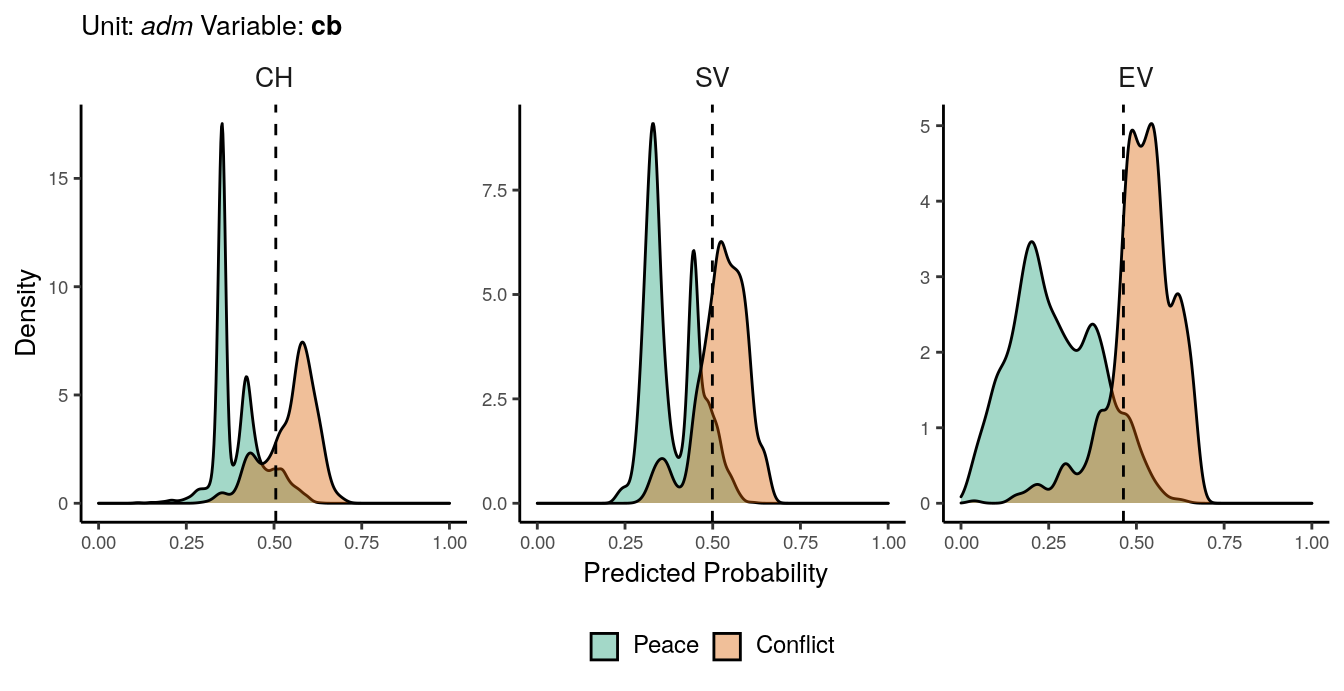
Figure 1.1: Predicted probability of cb conflicts for adm districts. Note that in order to increase visibility the scale on the y-axis differs from one facet to another.
| Version | Author | Date |
|---|---|---|
| de8ce5a | Darius Görgen | 2021-04-05 |
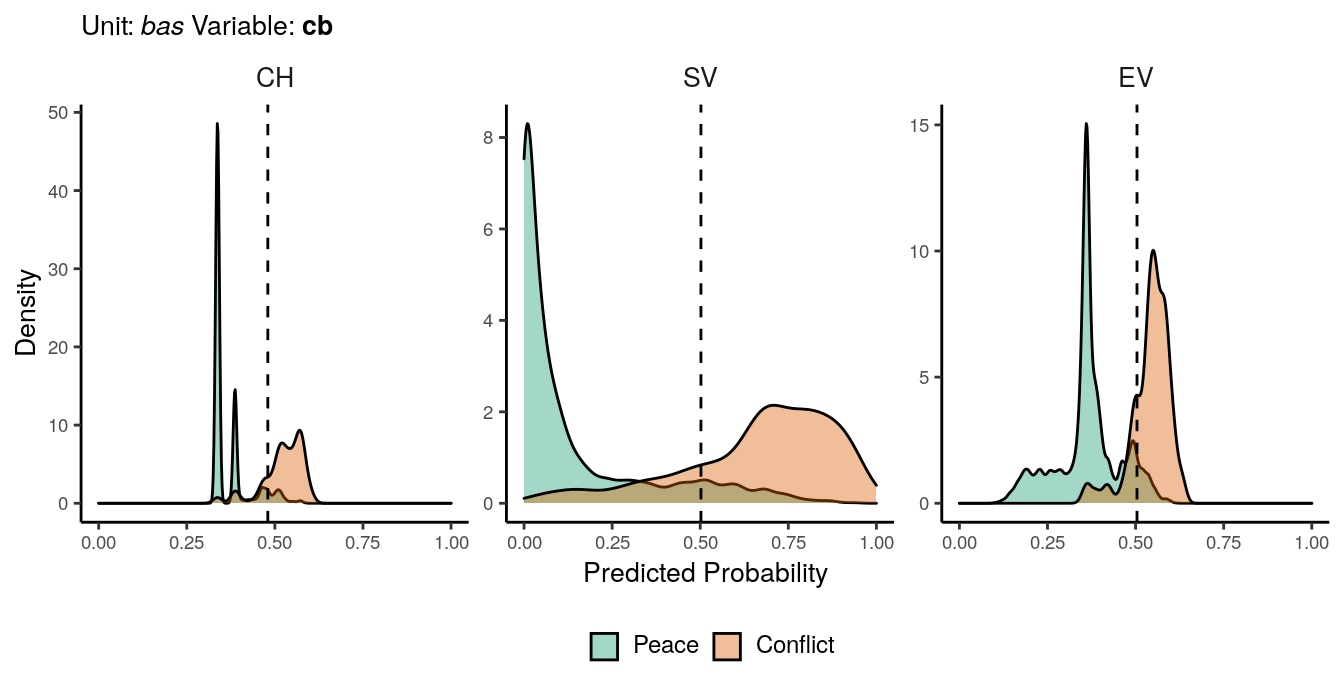
Figure 1.2: Predicted probability of cb conflicts for bas districts. Note that in order to increase visibility the scale on the y-axis differs from one facet to another.
| Version | Author | Date |
|---|---|---|
| de8ce5a | Darius Görgen | 2021-04-05 |
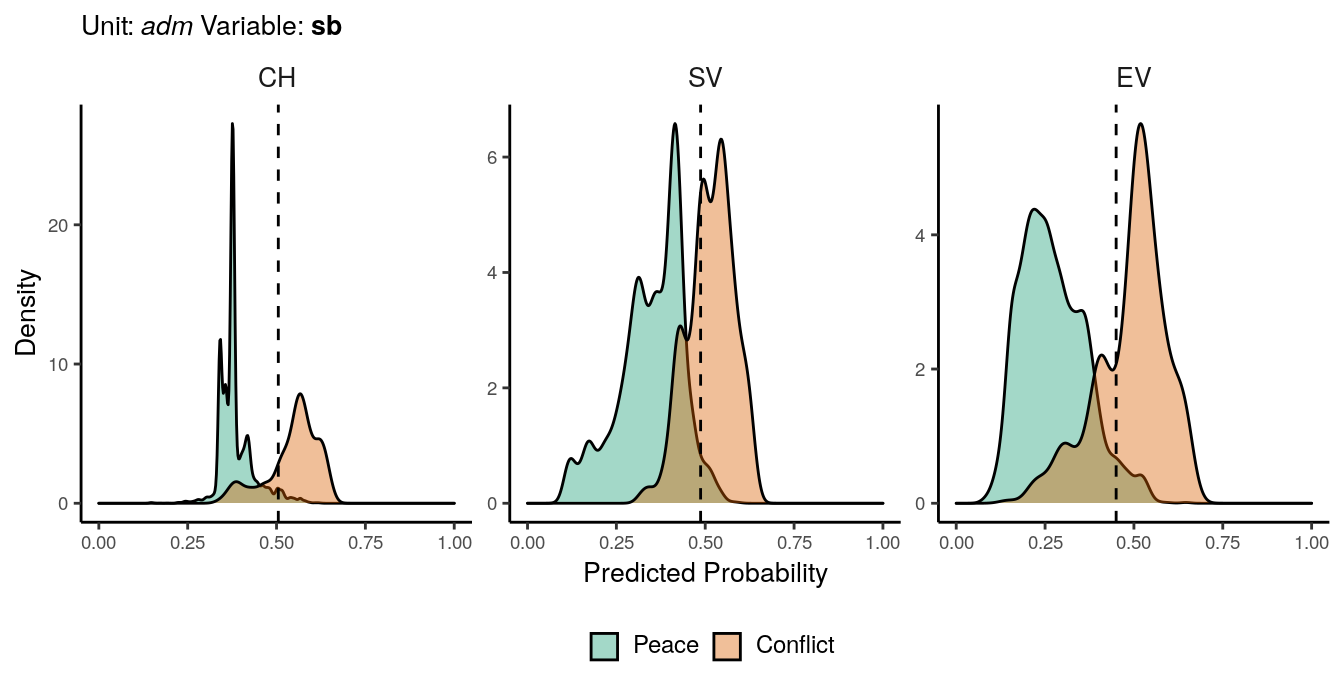
Figure 1.3: Predicted probability of sb conflicts for adm districts. Note that in order to increase visibility the scale on the y-axis differs from one facet to another.
| Version | Author | Date |
|---|---|---|
| de8ce5a | Darius Görgen | 2021-04-05 |
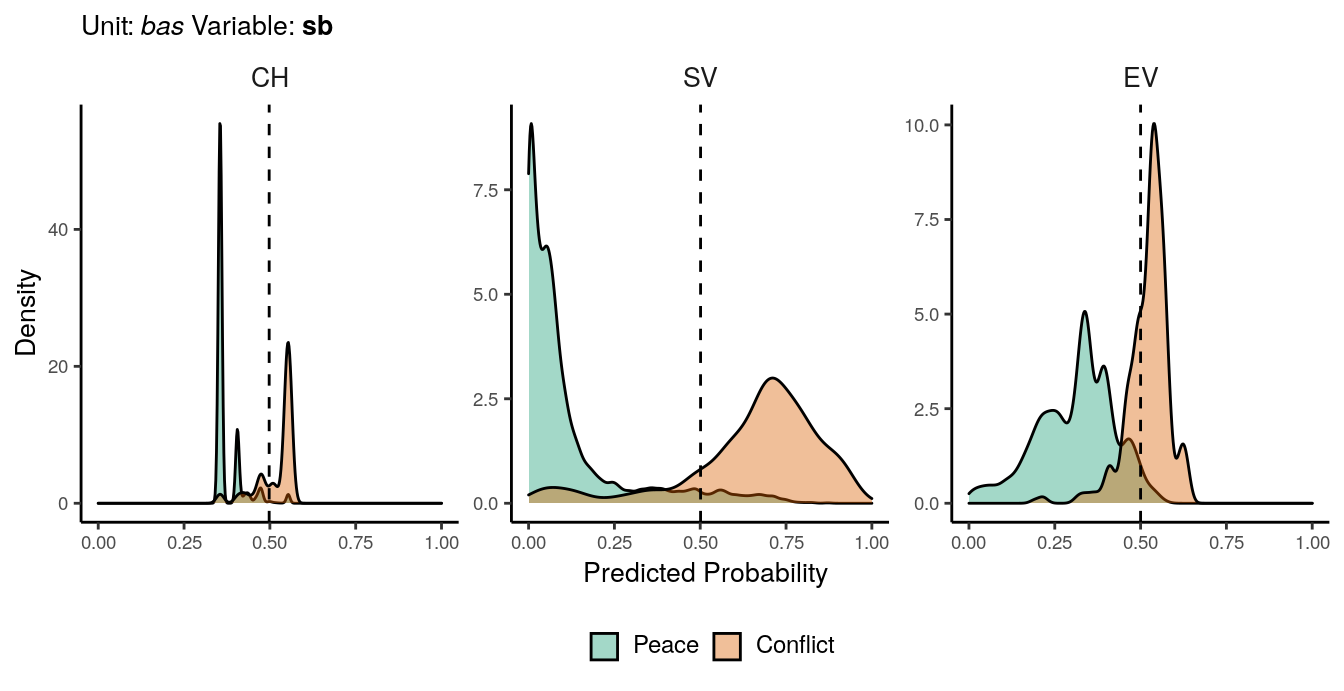
Figure 1.4: Predicted probability of sb conflicts for bas districts. Note that in order to increase visibility the scale on the y-axis differs from one facet to another.
| Version | Author | Date |
|---|---|---|
| de8ce5a | Darius Görgen | 2021-04-05 |
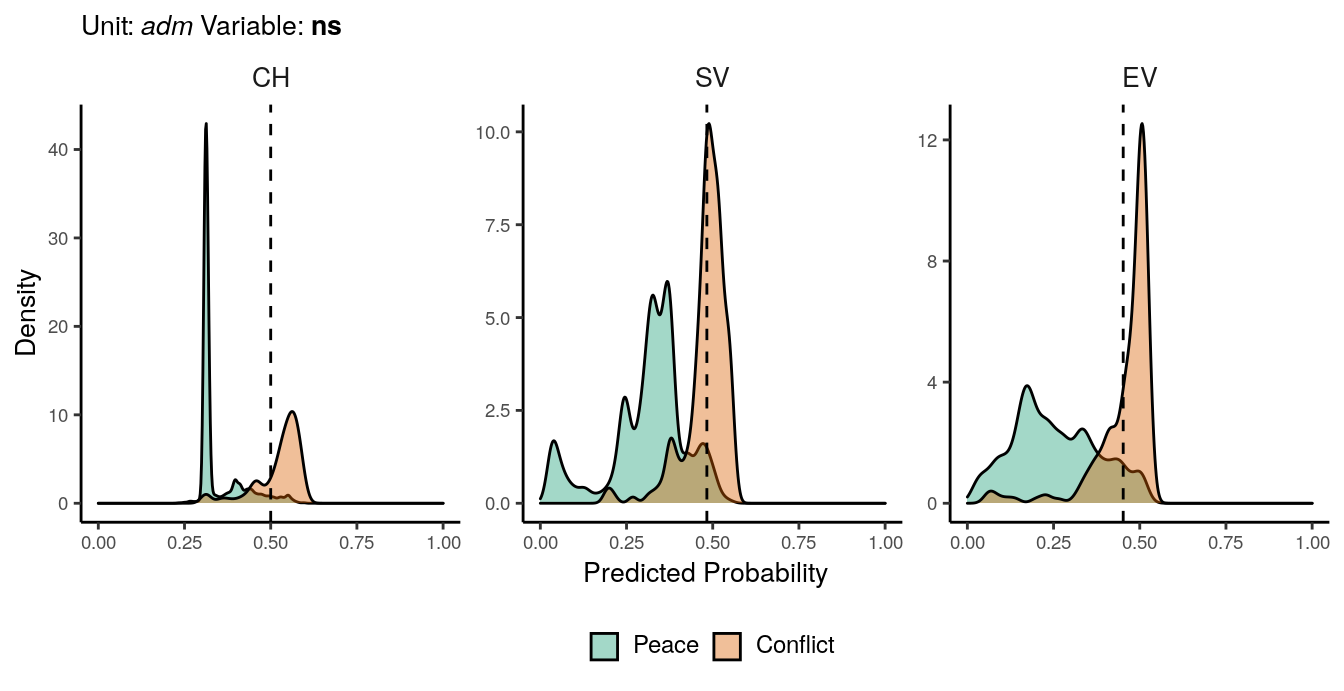
Figure 1.5: Predicted probability of ns conflicts for adm districts. Note that in order to increase visibility the scale on the y-axis differs from one facet to another.
| Version | Author | Date |
|---|---|---|
| de8ce5a | Darius Görgen | 2021-04-05 |
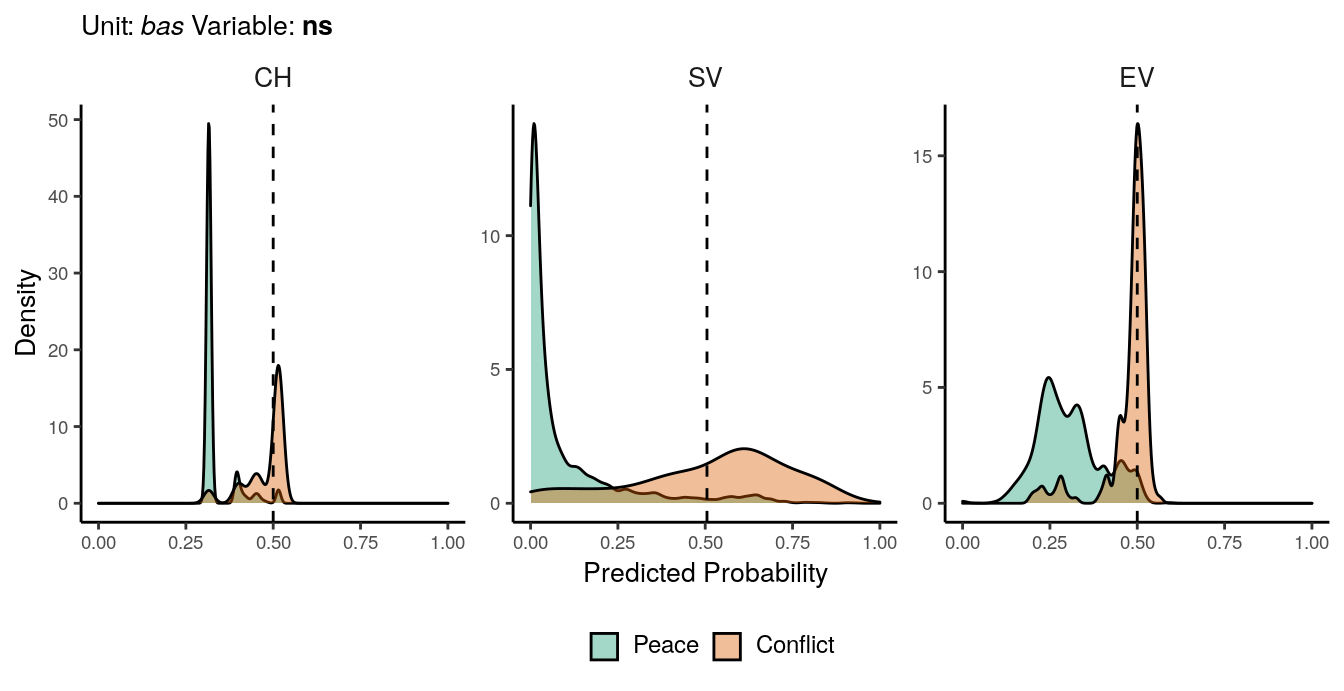
Figure 1.6: Predicted probability of ns conflicts for bas districts. Note that in order to increase visibility the scale on the y-axis differs from one facet to another.
| Version | Author | Date |
|---|---|---|
| de8ce5a | Darius Görgen | 2021-04-05 |
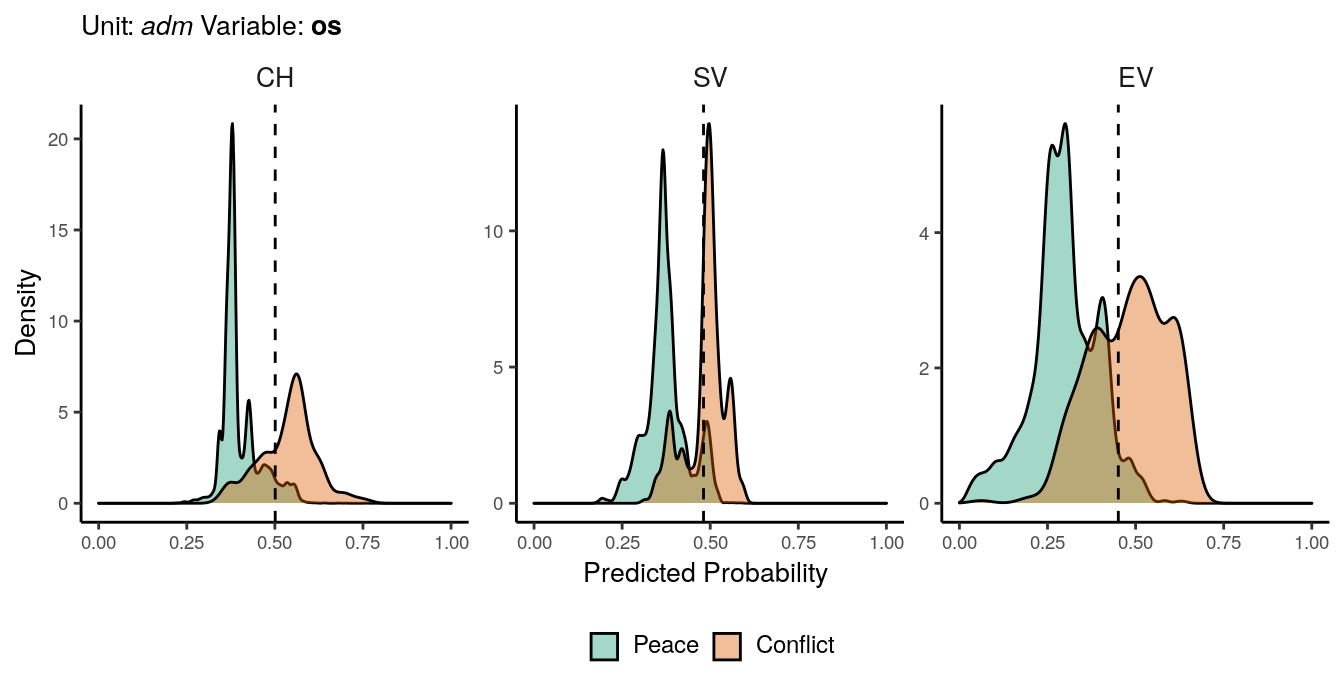
Figure 1.7: Predicted probability of os conflicts for adm districts. Note that in order to increase visibility the scale on the y-axis differs from one facet to another.
| Version | Author | Date |
|---|---|---|
| de8ce5a | Darius Görgen | 2021-04-05 |
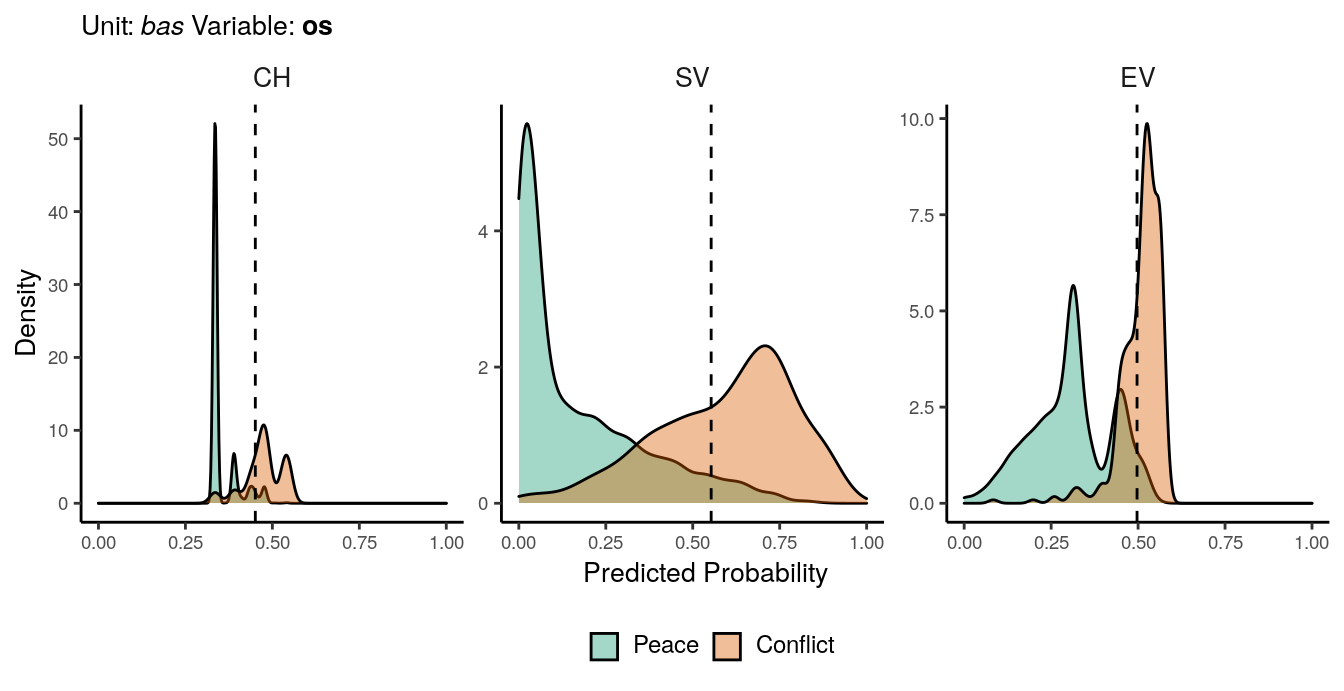
Figure 1.8: Predicted probability of os conflicts for bas districts. Note that in order to increase visibility the scale on the y-axis differs from one facet to another.
| Version | Author | Date |
|---|---|---|
| de8ce5a | Darius Görgen | 2021-04-05 |
Additional Global Performance Metrics
#files <- list.files("../output/acc/", pattern = ".rds", full.names = T)
files <- list.files("../output/test-results/", pattern = "test-results", full.names = T)
# files <- files[-grep("test-results-regression-basins", files)]
acc_data <- lapply(files, function(x){
out <- vars_detect(x)
tmp = readRDS(x)
tmp %>%
filter(month == 0) %>%
group_by(name) %>%
summarise(mean = mean(score, na.rm = T),
median = median(score, na.rm = TRUE),
sd = sd(score, na.rm = T),
type = out$type,
unit = out$unit,
var = out$var) %>%
ungroup()
})
acc_data = do.call(rbind, acc_data)
acc_data %<>%
mutate(var = factor(var,
levels = c("all", "sb", "ns", "os"),
labels = c("cb", "sb", "ns", "os")),
type = factor(type,
labels = c("LR", "CH", "SV", "EV"),
levels = c("regression", "baseline", "structural", "environmental")),
unit = if_else(unit == "basins", "bas", "adm"),
unit = factor(unit, levels = c("adm", "bas"), labels = c("adm", "bas")))
pd <- position_dodge(0.1)
score = "median"labs.unit = c("_adm_", "_bas_")
names(labs.unit) = c("adm", "bas")
labs.name = c("", "")
names(labs.name) = c("AUC", "AUC")
plt_auc = acc_data %>%
dplyr::filter(name == "auc") %>%
dplyr::select(type, unit, var, name, score = !!score, sd) %>%
ggplot(aes(color=var, x=type, shape=var)) +
geom_point(aes(y=score), position = position_dodge2(width = .5)) +
geom_errorbar(aes(ymin=score-sd, ymax=score+sd, x=type), width=.5, position = position_dodge2(width = .5)) +
scale_color_brewer(palette = "Dark2") +
labs(x="", y = "AUC", color = "Conflict Class", shape = "Conflict Class") +
ylim(0,1) +
facet_wrap(~unit+name, labeller = labeller(unit = labs.unit, name = labs.name)) +
guides(color=guide_legend(ncol=4)) +
my_theme
plt_spec = acc_data %>%
filter(name == "specificity") %>%
dplyr::select(type, unit, var, name, score = !!score, sd) %>%
ggplot(aes(color=var, x=type, shape=var)) +
geom_point(aes(y=score), position = position_dodge2(width = .5)) +
geom_errorbar(aes(ymin=score-sd, ymax=score+sd, x=type), width=.5, position = position_dodge2(width = .5)) +
scale_color_brewer(palette = "Dark2") +
labs(x="Model type", y = "Specificity", color = "Conflict Class", shape = "Conflict Class") +
ylim(0,1) +
facet_wrap(~unit+name, labeller = labeller(unit = labs.unit, name = labs.name)) +
guides(color=guide_legend(ncol=4)) +
my_theme
if(knitr::is_latex_output()){
ggarrange(plt_auc, plt_spec, ncol = 1, common.legend = T, legend = "bottom")
} else {
require(plotly)
subplot(plt_auc, plt_spec, nrows = 2) %>%
layout(legend = list(orientation = "h",
xanchor = "center",
x = 0.5, y = -.1))
}Figure 1.9: Global performance of the AUC metric (top) and pecificity (bottom).
Additional Temporal Performance Metrics
#files <- list.files("../output/acc/", pattern = ".rds", full.names = T)
files <- list.files("../output/test-results/", pattern = "test-results", full.names = T)
# files <- files[-grep("test-results-regression-basins", files)]
acc_data <- lapply(files, function(x){
out <- vars_detect(x)
tmp = readRDS(x)
tmp$type = out$type
tmp %>%
filter(month != 0)
})
acc_data = do.call(rbind, acc_data)
acc_data %<>%
mutate(var = factor(var, labels = c("all", "sb", "ns", "os"),
levels = c("all", "sb", "ns", "os")),
type = factor(type,
labels = c("LR", "CH", "SV", "EV"),
levels = c("regression", "baseline", "structural", "environmental")),
unit = if_else(unit == "basins", "bas", "adm"),
unit = factor(unit, levels = c("adm", "bas"), labels = c("adm", "bas")))
labs.unit = c("_adm_", "_bas_")
names(labs.unit) = c("adm", "bas")
labs.var = c("__cb__", "__sb__", "__ns__", "__os__")
names(labs.var) = c("all", "sb", "ns", "os")acc_data %>%
filter(name == "auc") %>%
dplyr::select(name, score, month, var, unit, type) %>%
ggplot(aes(x=month, y=score, color=type, linetype=type))+
stat_smooth(geom='line', alpha=.4, size=.5, se=FALSE, lwd=1)+
facet_grid(unit~var, labeller = labeller(unit = labs.unit, var = labs.var)) +
scale_x_continuous(breaks=c(1:12)) +
ylim(0,1) +
theme_classic() +
scale_color_brewer(palette="Dark2") +
labs(subtitle = "AUC", x = "Prediction window (in months)", y = "Score", color = "Model", linetype = "Model") +
guides(color=guide_legend(ncol=4)) +
my_theme -> plt_out
plot_output(plt_out)Figure 1.10: Time dependent performance of the AUC metric.
acc_data %>%
filter(name == "specificity") %>%
dplyr::select(name, score, month, var, unit, type) %>%
ggplot(aes(x=month, y=score, color=type, linetype=type))+
stat_smooth(geom='line', alpha=.4, size=.5, se=FALSE, lwd=1)+
facet_grid(unit~var, labeller = labeller(unit = labs.unit, var = labs.var)) +
scale_x_continuous(breaks=c(1:12)) +
ylim(0,1) +
theme_classic() +
scale_color_brewer(palette="Dark2") +
labs(subtitle = "Specificity", x = "Prediction window (in months)", y = "Score", color = "Model", linetype="Model") +
guides(color=guide_legend(ncol=4)) +
my_theme -> plt_out
plot_output(plt_out)Figure 1.11: Time dependent performance of specificity.
ROC Curves
files <- list.files("../output/acc/", pattern = ".rds", full.names = T)
auc_data <- lapply(files, function(x){
out <- vars_detect(x)
tmp = readRDS(x)
df_auc <- lapply(1:length(tmp), function(i){
rep = tmp[[i]]$rep
FPR = tmp[[i]]$auc$curve[,1]
recall = tmp[[i]]$auc$curve[,2]
FPR = FPR[ c(rep(FALSE, 3), TRUE)] # reduce to every 4th entry to reduce file size
recall = recall[ c(rep(FALSE, 3), TRUE)] # reduce to every 4th entry to reduce file size
auc <- tibble(type = out$type,
unit = out$unit,
var = out$var,
rep = rep,
FPR = FPR,
recall = recall)
})
df_auc = do.call(rbind, df_auc)
})
auc_data <- do.call(rbind, auc_data)
auc_data %<>%
mutate(var = factor(var,
labels = c("__cb__", "__sb__", "__ns__", "__os__"),
levels = c("all", "sb", "ns", "os")),
type = factor(type,
labels = c("CH", "SV", "EV"),
levels = c("baseline", "structural", "environmental")),
unit = factor(unit, levels = c("states", "basins"), labels = c("adm", "bas")))auc_data %>%
filter(unit == "adm") %>%
mutate(group = paste(type,var,rep,sep="-")) %>%
ggplot(aes(x=FPR, y=recall,color=type,linetype=type)) +
geom_line(aes(group=group), size=.1, alpha = .5) +
geom_smooth(alpha=1, size=.5, se=FALSE) +
scale_color_manual(values = RColorBrewer::brewer.pal(n=4, name = "Dark2")[2:4]) +
facet_wrap(~var, ncol = 2) +
labs(color = "Model", linetype="Model", y = "Sensitivity", x = "FPR", subtitle = "adm") +
guides(color=guide_legend(override.aes = list(alpha = 1, ncol = 3))) +
my_theme +
theme(
plot.subtitle = element_markdown(size = 10, face = "italic")
) 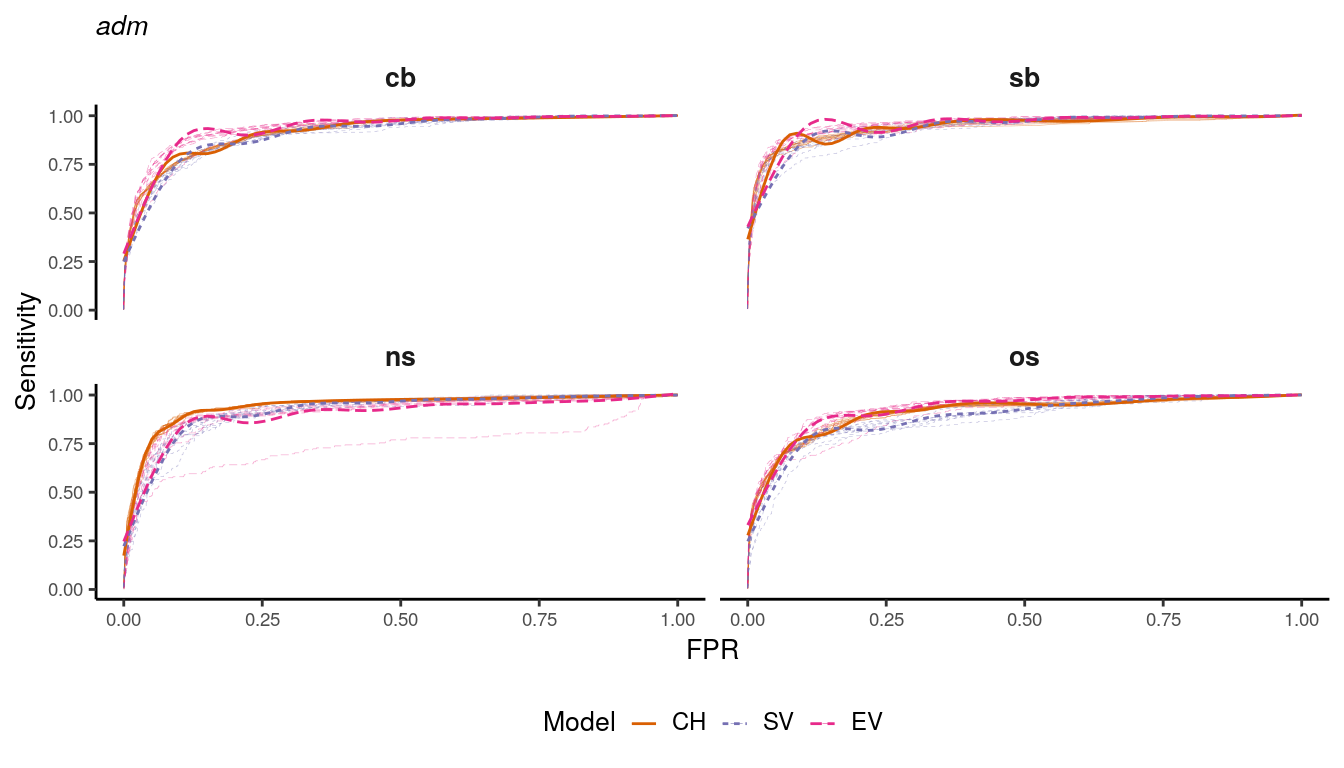
Figure 1.12: ROC curves for adm district models.
| Version | Author | Date |
|---|---|---|
| de8ce5a | Darius Görgen | 2021-04-05 |
auc_data %>%
filter(unit == "bas") %>%
mutate(group = paste(type,var,rep,sep="-")) %>%
ggplot(aes(x=FPR, y=recall,color=type,linetype=type)) +
geom_line(aes(group=group), size=.1, alpha = .5) +
geom_smooth(alpha=1, size=.5, se=FALSE) +
scale_color_manual(values = RColorBrewer::brewer.pal(n=4, name = "Dark2")[2:4]) +
facet_wrap(~var, ncol = 2) +
labs(color = "Model", linetype="Model", y = "Sensitivity", x = "FPR", subtitle = "bas") +
guides(color=guide_legend(override.aes = list(alpha = 1, ncol = 3))) +
my_theme +
theme(
plot.subtitle = element_markdown(size = 10, face = "italic")
)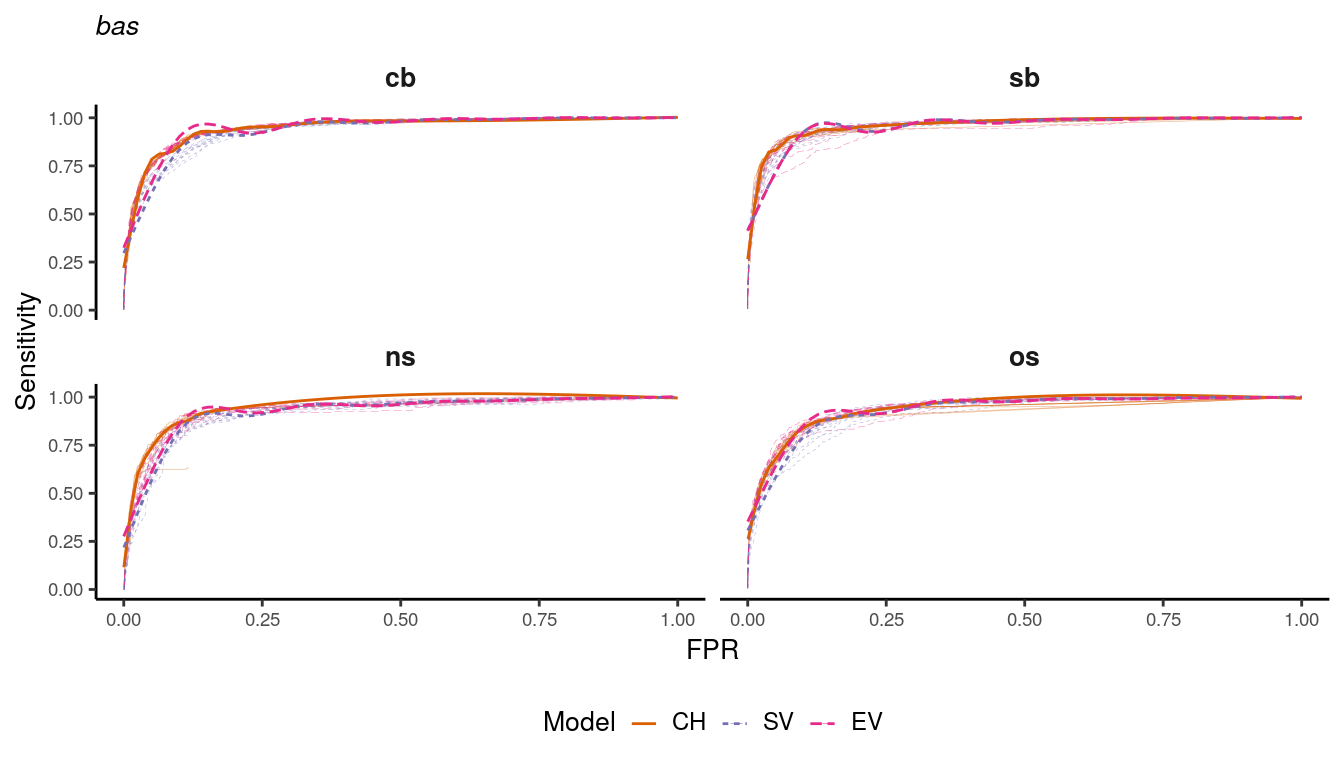
Figure 1.13: ROC curves for bas district models.
| Version | Author | Date |
|---|---|---|
| de8ce5a | Darius Görgen | 2021-04-05 |
adm <- st_read("../data/vector/states_mask.gpkg", quiet = T)
adm <- select(adm, geom)
adm <- st_make_valid(adm)
bas <- st_read("../data/vector/basins_simple.gpkg", quiet = T)
bas <- select(bas, geom)
bas <- st_make_valid(bas)
crs <- st_crs("EPSG:3857")
adm <- st_transform(adm, crs)
adm <- st_simplify(adm, dTolerance = 1500, preserveTopology = T)
bas <- st_transform(bas, crs)
bas <- st_simplify(bas, dTolerance = 1000, preserveTopology = T)
files = list.files("../output/test-results/", pattern ="cnfrisk", full.names = T)
map_data = lapply(files, function(x){
out = vars_detect(x)
tmp = st_read(x, quiet = T)
tmp = st_drop_geometry(tmp)
tmp$unit = out$unit
tmp$type = out$type
tmp$var = out$var
tmp %<>%
select(unit,type,var,mean,obsv)
if(out$unit == "basins") {
st_as_sf(bind_cols(bas, tmp))
} else {
st_as_sf(bind_cols(adm, tmp))
}
})
map_data = do.call(rbind, map_data)map_data %>%
filter(unit == "states", var == "sb") -> plt_data
breaks = seq(0,1,0.1)
plt_data %>%
filter(type == "baseline") %>%
dplyr::select(obsv) %>%
mutate(obsv = ifelse(obsv > 0, obsv, NA)) -> obsv_data
obsv_data %>%
tm_shape() +
tm_polygons("obsv",
palette = "PuBu",
lwd=.01,
border.col = "grey90",
breaks = 0:12,
style = "fixed",
title = "Conflict Months",
showNA = FALSE,
legend.hist = TRUE,
labels = as.character(1:12)) +
tm_legend(stack = "horizontal") +
tm_layout(title = "Observation",
title.position = c("right", "top"),
title.size = 0.7,
legend.title.size = 0.7,
legend.text.size = 0.45,
legend.position = c("left", "bottom"),
legend.outside.position = "bottom",
legend.bg.color = "white",
legend.bg.alpha = 0,
legend.outside = TRUE,
legend.hist.width = 1,
legend.hist.height = .8,
legend.hist.size = .5) -> map_obsv
plt_data %>%
filter(type == "baseline") %>%
tm_shape() +
tm_polygons("mean",
palette = "PuBu",
lwd=.01,
border.col = "grey90",
title = "Probability of conflict",
breaks = breaks,
style = "fixed",
legend.hist = TRUE) +
tm_legend(stack = "horizontal") +
tm_layout(title = "Conflict History (CH)",
title.position = c("right", "top"),
title.size = 0.7,
legend.title.size = 0.7,
legend.text.size = 0.45,
legend.position = c("left", "bottom"),
legend.outside.position = "bottom",
legend.bg.color = "white",
legend.bg.alpha = 0,
legend.outside = TRUE,
legend.hist.width = 1,
legend.hist.height = .8,
legend.hist.size = .5) -> map_bas
plt_data %>%
filter(type == "structural") %>%
tm_shape() +
tm_polygons("mean",
palette = "PuBu",
lwd=.01,
border.col = "grey90",
title = "Probability of conflict",
breaks = breaks,
style = "fixed",
legend.hist = TRUE) +
tm_legend(stack = "horizontal") +
tm_layout(title = "Structural Variables (SV)",
title.position = c("right", "top"),
title.size = 0.7,
legend.title.size = 0.7,
legend.text.size = 0.45,
legend.position = c("left", "bottom"),
legend.outside.position = "bottom",
legend.bg.color = "white",
legend.bg.alpha = 0,
legend.outside = TRUE,
legend.hist.width = 1,
legend.hist.height = .8,
legend.hist.size = .5) -> map_str
plt_data %>%
filter(type == "environmental") %>%
tm_shape() +
tm_polygons("mean",
palette = "PuBu",
lwd=.01,
border.col = "grey90",
title = "Probability of conflict",
breaks = breaks,
style = "fixed",
legend.hist = TRUE) +
tm_legend(stack = "horizontal") +
tm_layout(title = "Environmental Variables (EV)",
title.position = c("right", "top"),
title.size = 0.7,
legend.title.size = 0.7,
legend.text.size = 0.45,
legend.position = c("left", "bottom"),
legend.outside.position = "bottom",
legend.bg.color = "white",
legend.bg.alpha = 0,
legend.outside = TRUE,
legend.hist.width = 1,
legend.hist.height = .8,
legend.hist.size = .5) -> map_env
tmap_arrange(map_obsv, map_bas, map_str, map_env, ncol = 2)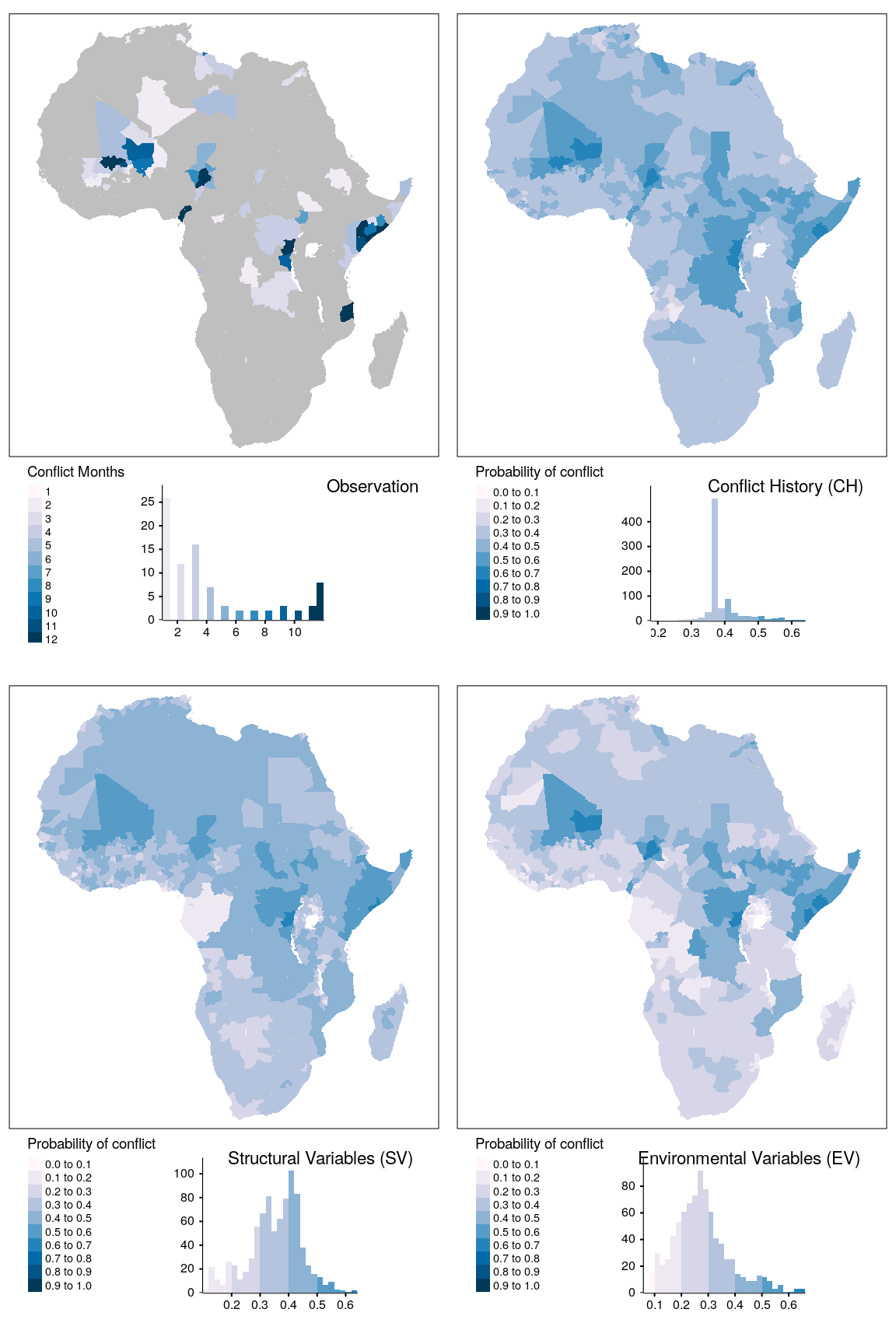
Figure 1.14: Spatial prediction of conflict class sb for adm districts.
| Version | Author | Date |
|---|---|---|
| de8ce5a | Darius Görgen | 2021-04-05 |
map_data %>%
filter(unit == "states", var == "ns") -> plt_data
breaks = seq(0,1,0.1)
plt_data %>%
filter(type == "baseline") %>%
dplyr::select(obsv) %>%
mutate(obsv = ifelse(obsv > 0, obsv, NA)) -> obsv_data
obsv_data %>%
tm_shape() +
tm_polygons("obsv",
palette = "PuBu",
lwd=.01,
border.col = "grey90",
breaks = 0:12,
style = "fixed",
title = "Conflict Months",
showNA = FALSE,
legend.hist = TRUE,
labels = as.character(1:12)) +
tm_legend(stack = "horizontal") +
tm_layout(title = "Observation",
title.position = c("right", "top"),
title.size = 0.7,
legend.title.size = 0.7,
legend.text.size = 0.45,
legend.position = c("left", "bottom"),
legend.outside.position = "bottom",
legend.bg.color = "white",
legend.bg.alpha = 0,
legend.outside = TRUE,
legend.hist.width = 1,
legend.hist.height = .8,
legend.hist.size = .5) -> map_obsv
plt_data %>%
filter(type == "baseline") %>%
tm_shape() +
tm_polygons("mean",
palette = "PuBu",
lwd=.01,
border.col = "grey90",
title = "Probability of conflict",
breaks = breaks,
style = "fixed",
legend.hist = TRUE) +
tm_legend(stack = "horizontal") +
tm_layout(title = "Conflict History (CH)",
title.position = c("right", "top"),
title.size = 0.7,
legend.title.size = 0.7,
legend.text.size = 0.45,
legend.position = c("left", "bottom"),
legend.outside.position = "bottom",
legend.bg.color = "white",
legend.bg.alpha = 0,
legend.outside = TRUE,
legend.hist.width = 1,
legend.hist.height = .8,
legend.hist.size = .5) -> map_bas
plt_data %>%
filter(type == "structural") %>%
tm_shape() +
tm_polygons("mean",
palette = "PuBu",
lwd=.01,
border.col = "grey90",
title = "Probability of conflict",
breaks = breaks,
style = "fixed",
legend.hist = TRUE) +
tm_legend(stack = "horizontal") +
tm_layout(title = "Structural Variables (SV)",
title.position = c("right", "top"),
title.size = 0.7,
legend.title.size = 0.7,
legend.text.size = 0.45,
legend.position = c("left", "bottom"),
legend.outside.position = "bottom",
legend.bg.color = "white",
legend.bg.alpha = 0,
legend.outside = TRUE,
legend.hist.width = 1,
legend.hist.height = .8,
legend.hist.size = .5) -> map_str
plt_data %>%
filter(type == "environmental") %>%
tm_shape() +
tm_polygons("mean",
palette = "PuBu",
lwd=.01,
border.col = "grey90",
title = "Probability of conflict",
breaks = breaks,
style = "fixed",
legend.hist = TRUE) +
tm_legend(stack = "horizontal") +
tm_layout(title = "Environmental Variables (EV)",
title.position = c("right", "top"),
title.size = 0.7,
legend.title.size = 0.7,
legend.text.size = 0.45,
legend.position = c("left", "bottom"),
legend.outside.position = "bottom",
legend.bg.color = "white",
legend.bg.alpha = 0,
legend.outside = TRUE,
legend.hist.width = 1,
legend.hist.height = .8,
legend.hist.size = .5) -> map_env
tmap_arrange(map_obsv, map_bas, map_str, map_env, ncol = 2)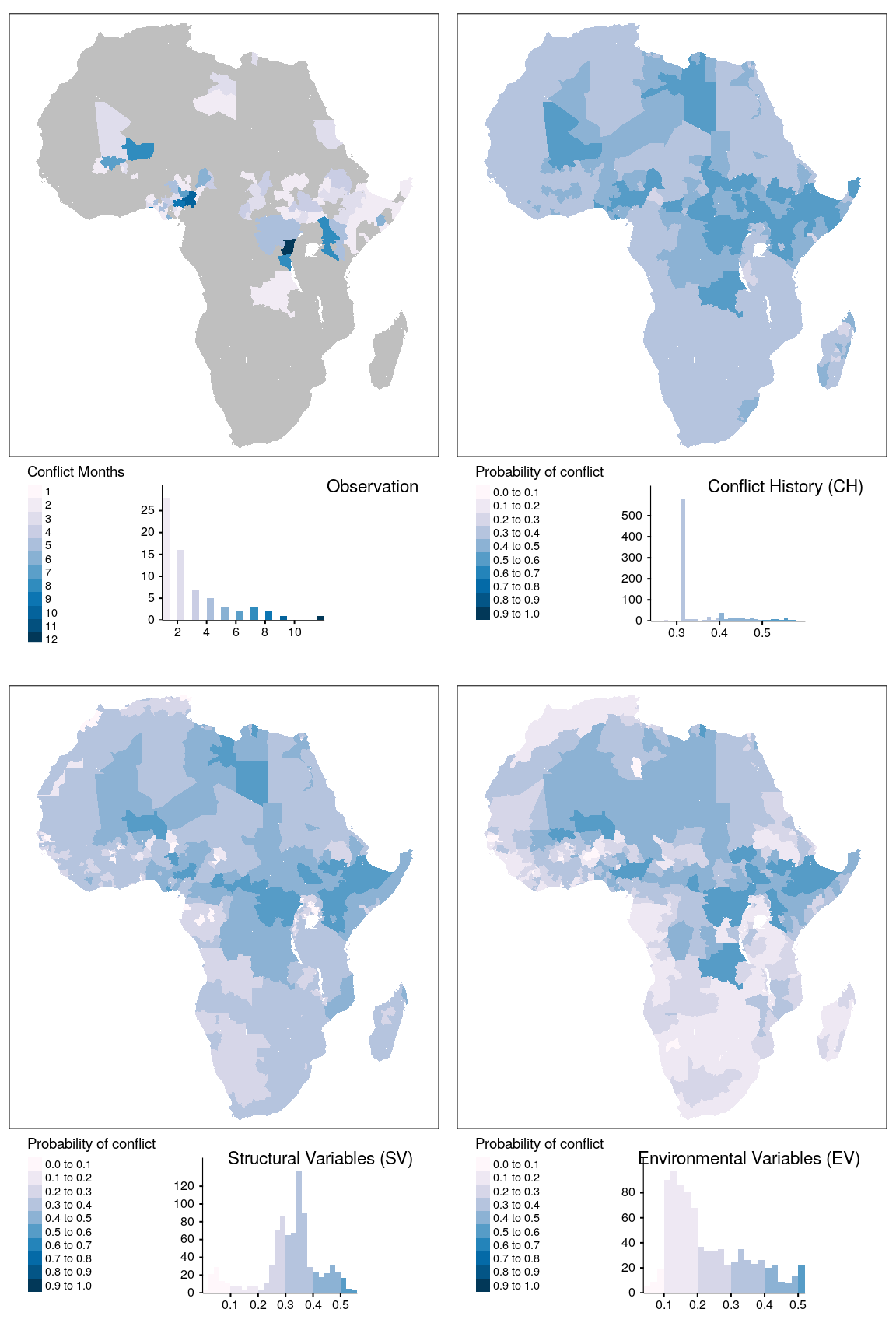
Figure 1.15: Spatial prediction of conflict class ns for adm districts.
| Version | Author | Date |
|---|---|---|
| de8ce5a | Darius Görgen | 2021-04-05 |
map_data %>%
filter(unit == "states", var == "os") -> plt_data
breaks = seq(0,1,0.1)
plt_data %>%
filter(type == "baseline") %>%
dplyr::select(obsv) %>%
mutate(obsv = ifelse(obsv > 0, obsv, NA)) -> obsv_data
obsv_data %>%
tm_shape() +
tm_polygons("obsv",
palette = "PuBu",
lwd=.01,
border.col = "grey90",
breaks = 0:12,
style = "fixed",
title = "Conflict Months",
showNA = FALSE,
legend.hist = TRUE,
labels = as.character(1:12)) +
tm_legend(stack = "horizontal") +
tm_layout(title = "Observation",
title.position = c("right", "top"),
title.size = 0.7,
legend.title.size = 0.7,
legend.text.size = 0.45,
legend.position = c("left", "bottom"),
legend.outside.position = "bottom",
legend.bg.color = "white",
legend.bg.alpha = 0,
legend.outside = TRUE,
legend.hist.width = 1,
legend.hist.height = .8,
legend.hist.size = .5) -> map_obsv
plt_data %>%
filter(type == "baseline") %>%
tm_shape() +
tm_polygons("mean",
palette = "PuBu",
lwd=.01,
border.col = "grey90",
title = "Probability of conflict",
breaks = breaks,
style = "fixed",
legend.hist = TRUE) +
tm_legend(stack = "horizontal") +
tm_layout(title = "Conflict History (CH)",
title.position = c("right", "top"),
title.size = 0.7,
legend.title.size = 0.7,
legend.text.size = 0.45,
legend.position = c("left", "bottom"),
legend.outside.position = "bottom",
legend.bg.color = "white",
legend.bg.alpha = 0,
legend.outside = TRUE,
legend.hist.width = 1,
legend.hist.height = .8,
legend.hist.size = .5) -> map_bas
plt_data %>%
filter(type == "structural") %>%
tm_shape() +
tm_polygons("mean",
palette = "PuBu",
lwd=.01,
border.col = "grey90",
title = "Probability of conflict",
breaks = breaks,
style = "fixed",
legend.hist = TRUE) +
tm_legend(stack = "horizontal") +
tm_layout(title = "Structural Variables (SV)",
title.position = c("right", "top"),
title.size = 0.7,
legend.title.size = 0.7,
legend.text.size = 0.45,
legend.position = c("left", "bottom"),
legend.outside.position = "bottom",
legend.bg.color = "white",
legend.bg.alpha = 0,
legend.outside = TRUE,
legend.hist.width = 1,
legend.hist.height = .8,
legend.hist.size = .5) -> map_str
plt_data %>%
filter(type == "environmental") %>%
tm_shape() +
tm_polygons("mean",
palette = "PuBu",
lwd=.01,
border.col = "grey90",
title = "Probability of conflict",
breaks = breaks,
style = "fixed",
legend.hist = TRUE) +
tm_legend(stack = "horizontal") +
tm_layout(title = "Environmental Variables (EV)",
title.position = c("right", "top"),
title.size = 0.7,
legend.title.size = 0.7,
legend.text.size = 0.45,
legend.position = c("left", "bottom"),
legend.outside.position = "bottom",
legend.bg.color = "white",
legend.bg.alpha = 0,
legend.outside = TRUE,
legend.hist.width = 1,
legend.hist.height = .8,
legend.hist.size = .5) -> map_env
tmap_arrange(map_obsv, map_bas, map_str, map_env, ncol = 2)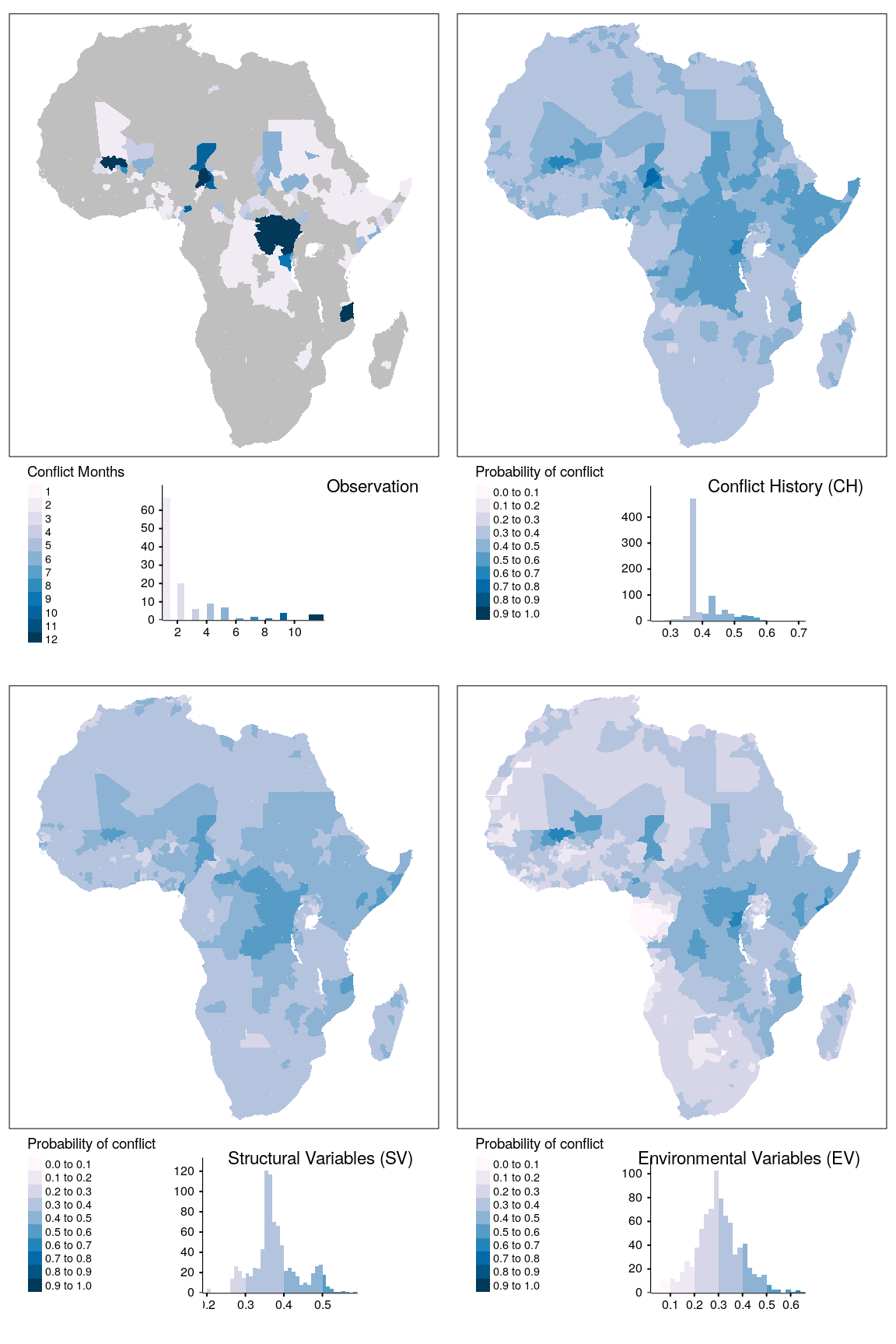
Figure 1.16: Spatial prediction of conflict class os for adm districts.
| Version | Author | Date |
|---|---|---|
| de8ce5a | Darius Görgen | 2021-04-05 |
map_data %>%
filter(unit == "basins", var == "sb") -> plt_data
breaks = seq(0,1,0.1)
plt_data %>%
filter(type == "baseline") %>%
dplyr::select(obsv) %>%
mutate(obsv = ifelse(obsv > 0, obsv, NA)) -> obsv_data
obsv_data %>%
tm_shape() +
tm_polygons("obsv",
palette = "PuBu",
lwd=.01,
border.col = "grey90",
breaks = 0:12,
style = "fixed",
title = "Conflict Months",
showNA = FALSE,
legend.hist = TRUE,
labels = as.character(1:12)) +
tm_legend(stack = "horizontal") +
tm_layout(title = "Observation",
title.position = c("right", "top"),
title.size = 0.7,
legend.title.size = 0.7,
legend.text.size = 0.45,
legend.position = c("left", "bottom"),
legend.outside.position = "bottom",
legend.bg.color = "white",
legend.bg.alpha = 0,
legend.outside = TRUE,
legend.hist.width = 1,
legend.hist.height = .8,
legend.hist.size = .5) -> map_obsv
plt_data %>%
filter(type == "baseline") %>%
tm_shape() +
tm_polygons("mean",
palette = "PuBu",
lwd=.01,
border.col = "grey90",
title = "Probability of conflict",
breaks = breaks,
style = "fixed",
legend.hist = TRUE) +
tm_legend(stack = "horizontal") +
tm_layout(title = "Conflict History (CH)",
title.position = c("right", "top"),
title.size = 0.7,
legend.title.size = 0.7,
legend.text.size = 0.45,
legend.position = c("left", "bottom"),
legend.outside.position = "bottom",
legend.bg.color = "white",
legend.bg.alpha = 0,
legend.outside = TRUE,
legend.hist.width = 1,
legend.hist.height = .8,
legend.hist.size = .5) -> map_bas
plt_data %>%
filter(type == "structural") %>%
tm_shape() +
tm_polygons("mean",
palette = "PuBu",
lwd=.01,
border.col = "grey90",
title = "Probability of conflict",
breaks = breaks,
style = "fixed",
legend.hist = TRUE) +
tm_legend(stack = "horizontal") +
tm_layout(title = "Structural Variables (SV)",
title.position = c("right", "top"),
title.size = 0.7,
legend.title.size = 0.7,
legend.text.size = 0.45,
legend.position = c("left", "bottom"),
legend.outside.position = "bottom",
legend.bg.color = "white",
legend.bg.alpha = 0,
legend.outside = TRUE,
legend.hist.width = 1,
legend.hist.height = .8,
legend.hist.size = .5) -> map_str
plt_data %>%
filter(type == "environmental") %>%
tm_shape() +
tm_polygons("mean",
palette = "PuBu",
lwd=.01,
border.col = "grey90",
title = "Probability of conflict",
breaks = breaks,
style = "fixed",
legend.hist = TRUE) +
tm_legend(stack = "horizontal") +
tm_layout(title = "Environmental Variables (EV)",
title.position = c("right", "top"),
title.size = 0.7,
legend.title.size = 0.7,
legend.text.size = 0.45,
legend.position = c("left", "bottom"),
legend.outside.position = "bottom",
legend.bg.color = "white",
legend.bg.alpha = 0,
legend.outside = TRUE,
legend.hist.width = 1,
legend.hist.height = .8,
legend.hist.size = .5) -> map_env
tmap_arrange(map_obsv, map_bas, map_str, map_env, ncol = 2)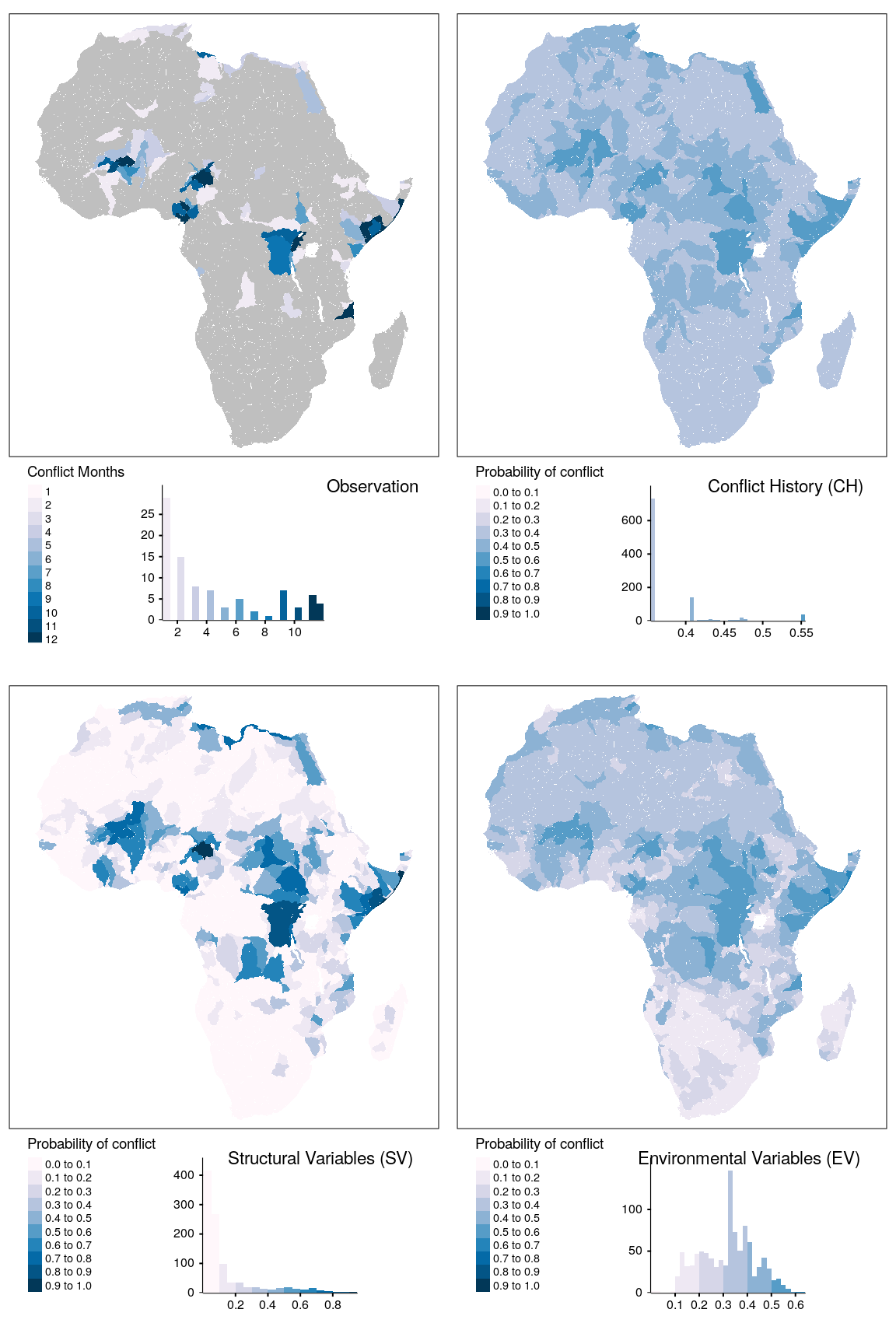
Figure 1.17: Spatial prediction of conflict class sb for bas districts.
| Version | Author | Date |
|---|---|---|
| de8ce5a | Darius Görgen | 2021-04-05 |
map_data %>%
filter(unit == "basins", var == "ns") -> plt_data
breaks = seq(0,1,0.1)
plt_data %>%
filter(type == "baseline") %>%
dplyr::select(obsv) %>%
mutate(obsv = ifelse(obsv > 0, obsv, NA)) -> obsv_data
obsv_data %>%
tm_shape() +
tm_polygons("obsv",
palette = "PuBu",
lwd=.01,
border.col = "grey90",
breaks = 0:12,
style = "fixed",
title = "Conflict Months",
showNA = FALSE,
legend.hist = TRUE,
labels = as.character(1:12)) +
tm_legend(stack = "horizontal") +
tm_layout(title = "Observation",
title.position = c("right", "top"),
title.size = 0.7,
legend.title.size = 0.7,
legend.text.size = 0.45,
legend.position = c("left", "bottom"),
legend.outside.position = "bottom",
legend.bg.color = "white",
legend.bg.alpha = 0,
legend.outside = TRUE,
legend.hist.width = 1,
legend.hist.height = .8,
legend.hist.size = .5) -> map_obsv
plt_data %>%
filter(type == "baseline") %>%
tm_shape() +
tm_polygons("mean",
palette = "PuBu",
lwd=.01,
border.col = "grey90",
title = "Probability of conflict",
breaks = breaks,
style = "fixed",
legend.hist = TRUE) +
tm_legend(stack = "horizontal") +
tm_layout(title = "Conflict History (CH)",
title.position = c("right", "top"),
title.size = 0.7,
legend.title.size = 0.7,
legend.text.size = 0.45,
legend.position = c("left", "bottom"),
legend.outside.position = "bottom",
legend.bg.color = "white",
legend.bg.alpha = 0,
legend.outside = TRUE,
legend.hist.width = 1,
legend.hist.height = .8,
legend.hist.size = .5) -> map_bas
plt_data %>%
filter(type == "structural") %>%
tm_shape() +
tm_polygons("mean",
palette = "PuBu",
lwd=.01,
border.col = "grey90",
title = "Probability of conflict",
breaks = breaks,
style = "fixed",
legend.hist = TRUE) +
tm_legend(stack = "horizontal") +
tm_layout(title = "Structural Variables (SV)",
title.position = c("right", "top"),
title.size = 0.7,
legend.title.size = 0.7,
legend.text.size = 0.45,
legend.position = c("left", "bottom"),
legend.outside.position = "bottom",
legend.bg.color = "white",
legend.bg.alpha = 0,
legend.outside = TRUE,
legend.hist.width = 1,
legend.hist.height = .8,
legend.hist.size = .5) -> map_str
plt_data %>%
filter(type == "environmental") %>%
tm_shape() +
tm_polygons("mean",
palette = "PuBu",
lwd=.01,
border.col = "grey90",
title = "Probability of conflict",
breaks = breaks,
style = "fixed",
legend.hist = TRUE) +
tm_legend(stack = "horizontal") +
tm_layout(title = "Environmental Variables (EV)",
title.position = c("right", "top"),
title.size = 0.7,
legend.title.size = 0.7,
legend.text.size = 0.45,
legend.position = c("left", "bottom"),
legend.outside.position = "bottom",
legend.bg.color = "white",
legend.bg.alpha = 0,
legend.outside = TRUE,
legend.hist.width = 1,
legend.hist.height = .8,
legend.hist.size = .5) -> map_env
tmap_arrange(map_obsv, map_bas, map_str, map_env, ncol = 2)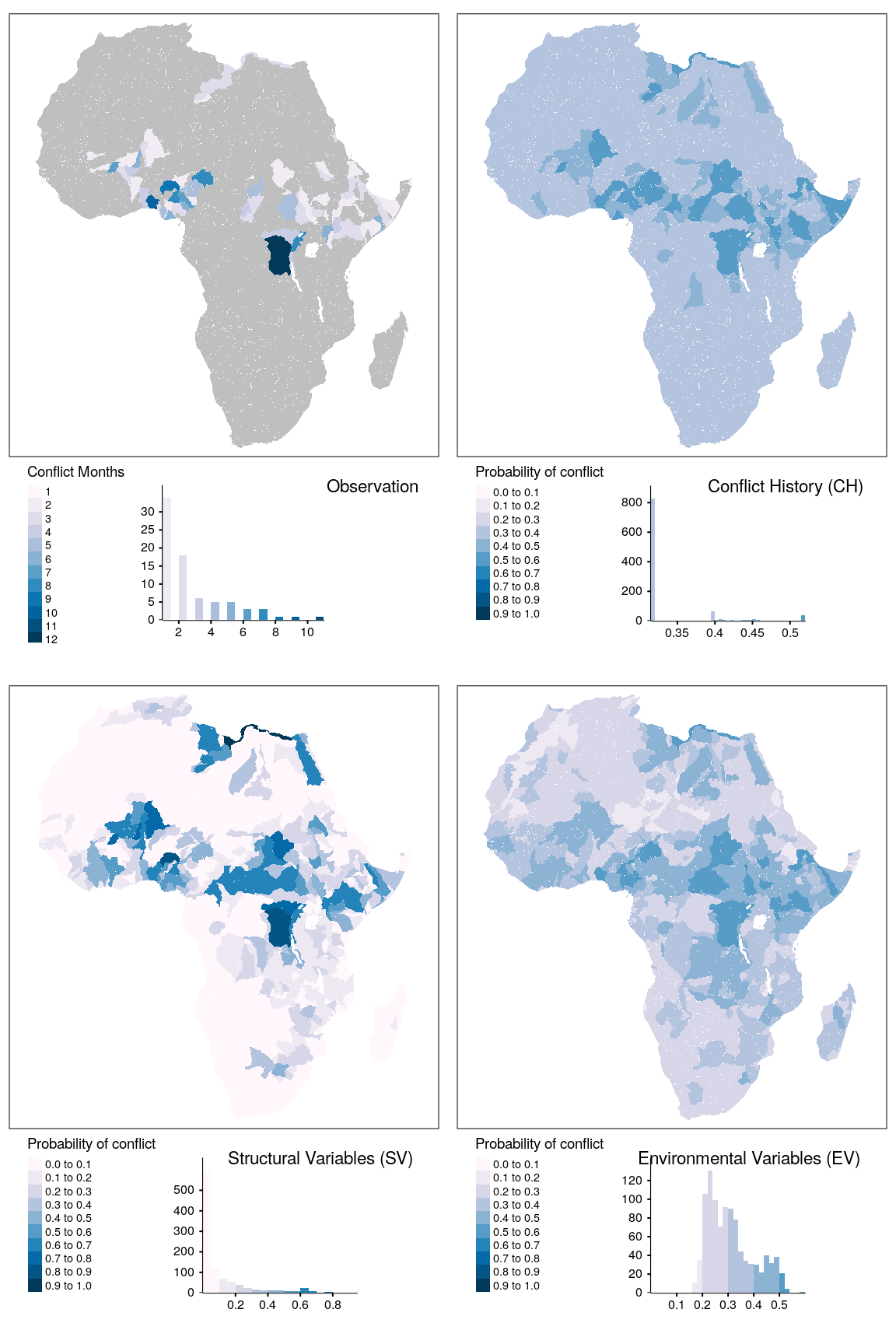
Figure 1.18: Spatial prediction of conflict class ns for bas districts.
| Version | Author | Date |
|---|---|---|
| de8ce5a | Darius Görgen | 2021-04-05 |
map_data %>%
filter(unit == "basins", var == "os") -> plt_data
breaks = seq(0,1,0.1)
plt_data %>%
filter(type == "baseline") %>%
dplyr::select(obsv) %>%
mutate(obsv = ifelse(obsv > 0, obsv, NA)) -> obsv_data
obsv_data %>%
tm_shape() +
tm_polygons("obsv",
palette = "PuBu",
lwd=.01,
border.col = "grey90",
breaks = 0:12,
style = "fixed",
title = "Conflict Months",
showNA = FALSE,
legend.hist = TRUE,
labels = as.character(1:12)) +
tm_legend(stack = "horizontal") +
tm_layout(title = "Observation",
title.position = c("right", "top"),
title.size = 0.7,
legend.title.size = 0.7,
legend.text.size = 0.45,
legend.position = c("left", "bottom"),
legend.outside.position = "bottom",
legend.bg.color = "white",
legend.bg.alpha = 0,
legend.outside = TRUE,
legend.hist.width = 1,
legend.hist.height = .8,
legend.hist.size = .5) -> map_obsv
plt_data %>%
filter(type == "baseline") %>%
tm_shape() +
tm_polygons("mean",
palette = "PuBu",
lwd=.01,
border.col = "grey90",
title = "Probability of conflict",
breaks = breaks,
style = "fixed",
legend.hist = TRUE) +
tm_legend(stack = "horizontal") +
tm_layout(title = "Conflict History (CH)",
title.position = c("right", "top"),
title.size = 0.7,
legend.title.size = 0.7,
legend.text.size = 0.45,
legend.position = c("left", "bottom"),
legend.outside.position = "bottom",
legend.bg.color = "white",
legend.bg.alpha = 0,
legend.outside = TRUE,
legend.hist.width = 1,
legend.hist.height = .8,
legend.hist.size = .5) -> map_bas
plt_data %>%
filter(type == "structural") %>%
tm_shape() +
tm_polygons("mean",
palette = "PuBu",
lwd=.01,
border.col = "grey90",
title = "Probability of conflict",
breaks = breaks,
style = "fixed",
legend.hist = TRUE) +
tm_legend(stack = "horizontal") +
tm_layout(title = "Structural Variables (SV)",
title.position = c("right", "top"),
title.size = 0.7,
legend.title.size = 0.7,
legend.text.size = 0.45,
legend.position = c("left", "bottom"),
legend.outside.position = "bottom",
legend.bg.color = "white",
legend.bg.alpha = 0,
legend.outside = TRUE,
legend.hist.width = 1,
legend.hist.height = .8,
legend.hist.size = .5) -> map_str
plt_data %>%
filter(type == "environmental") %>%
tm_shape() +
tm_polygons("mean",
palette = "PuBu",
lwd=.01,
border.col = "grey90",
title = "Probability of conflict",
breaks = breaks,
style = "fixed",
legend.hist = TRUE) +
tm_legend(stack = "horizontal") +
tm_layout(title = "Environmental Variables (EV)",
title.position = c("right", "top"),
title.size = 0.7,
legend.title.size = 0.7,
legend.text.size = 0.45,
legend.position = c("left", "bottom"),
legend.outside.position = "bottom",
legend.bg.color = "white",
legend.bg.alpha = 0,
legend.outside = TRUE,
legend.hist.width = 1,
legend.hist.height = .8,
legend.hist.size = .5) -> map_env
tmap_arrange(map_obsv, map_bas, map_str, map_env, ncol = 2)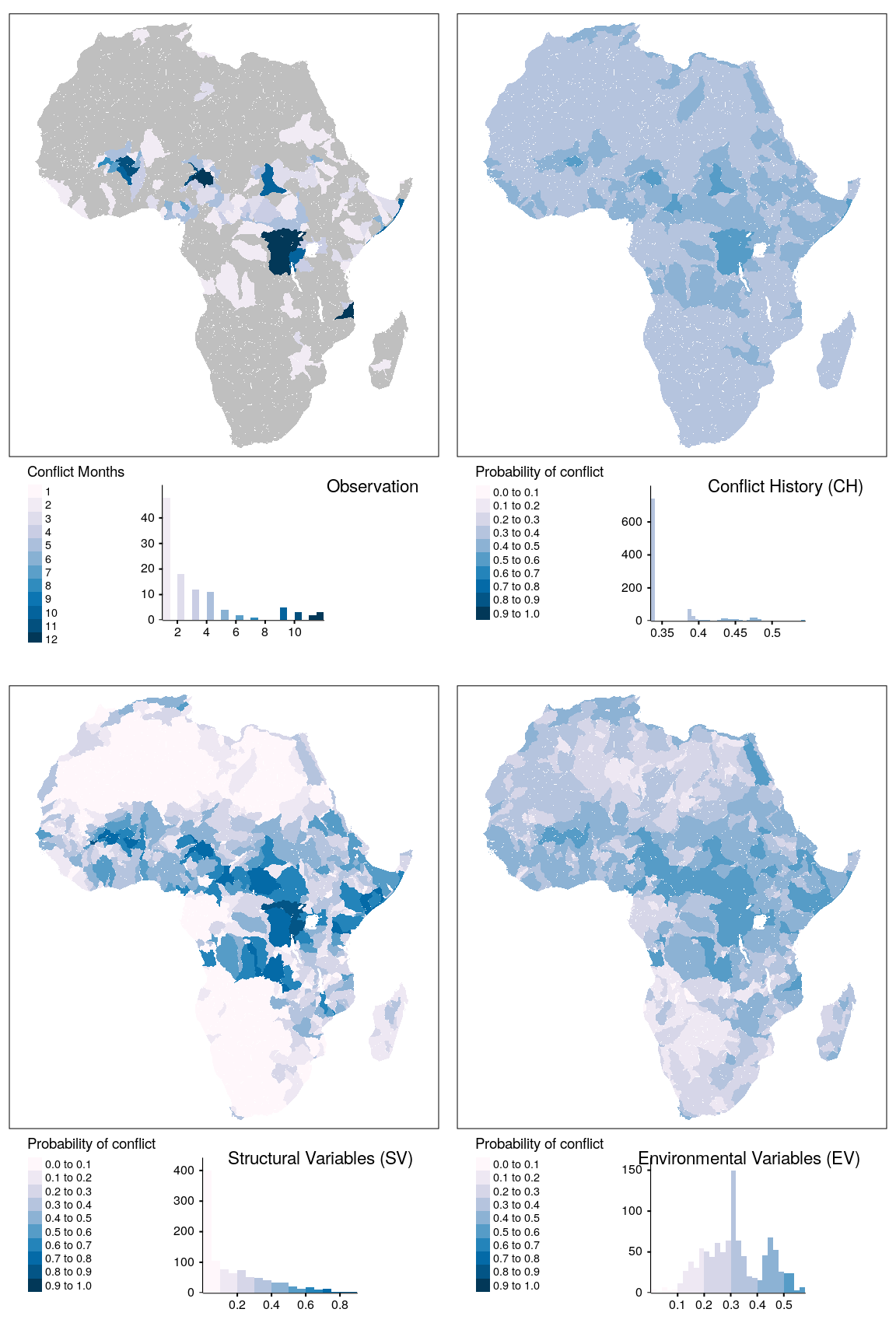
Figure 1.19: Spatial prediction of conflict class os for bas districts.
| Version | Author | Date |
|---|---|---|
| de8ce5a | Darius Görgen | 2021-04-05 |
\end{tiny}
QQ-Plots and Residual Plots of Interaction Model
files <- list.files("../output/test-results/", pattern = "test-results", full.names = T)
acc_data <- lapply(files, function(x){
out <- vars_detect(x)
tmp = readRDS(x)
tmp %<>%
filter(name == "f2",
month == 0)
tmp$type = out$type
tmp
})
acc_data = do.call(rbind, acc_data)
acc_data %<>%
mutate(type = factor(type,
levels = c("regression", "baseline", "structural", "environmental"),
labels = c("LR", "CH", "SV", "EV")),
var = factor(var,
levels = c("all", "sb", "ns", "os"),
labels = c("cb", "sb", "ns", "os")),
unit = factor(unit,
levels = c("states", "basins"),
labels = c("adm", "bas")))
acc_data %>%
# filter(type != "LR") %>%
group_by(var) %>%
nest() %>%
mutate(model = map(data, ~lm(score ~ unit*type, data = .x)),
model = map(model, ~augment(.x)),
plots_resid= map(model,
~ggplot(data = .x, aes(x=.fitted, y =.resid, shape = unit, color = type)) +
geom_point(alpha = .5) +
xlim(0.15,.7) +
labs(x="Fitted values",
y = "Residuals",
color = "Predictor set",
shape = "Aggregation unit",
subtitle = var) +
scale_color_brewer(palette = "Dark2") +
guides(colour = guide_legend(override.aes = list(alpha = 1)),
shape = guide_legend(override.aes = list(alpha = 1))) +
theme_classic() +
theme(
plot.subtitle=element_markdown(face = "bold", hjust = .5),
plot.title = element_markdown(size = 10),
plot.caption = element_markdown(size = 10),
plot.tag = element_markdown(size = 10),
strip.background = element_blank(),
strip.text = element_markdown(size = 10),
strip.text.x = element_markdown(size = 10),
strip.text.y = element_markdown(size = 10),
legend.position = "bottom",
legend.key.size = unit(0.4, "cm"),
legend.text = element_markdown(size = 9),
legend.title = element_markdown(size=10),
axis.text = element_markdown(size = 7),
axis.title=element_markdown(size=10)
)),
plots_qq = map(model,
~ggplot(data = .x, aes(sample = score, shape = unit, color = type)) +
stat_qq(alpha = .55) +
ylim(0.05, 0.85) +
labs(x="Theoretical quantiles",
y = "Sample quantiles",
color = "Predictor set",
shape = "Aggregation unit",
subtitle = var) +
scale_color_brewer(palette = "Dark2") +
guides(colour = guide_legend(override.aes = list(alpha = 1)),
shape = guide_legend(override.aes = list(alpha = 1))) +
theme_classic() +
theme(
plot.subtitle=element_markdown(face = "bold", hjust = .5),
plot.title = element_markdown(size = 10),
plot.caption = element_markdown(size = 10),
plot.tag = element_markdown(size = 10),
strip.background = element_blank(),
strip.text = element_markdown(size = 10),
strip.text.x = element_markdown(size = 10),
strip.text.y = element_markdown(size = 10),
legend.position = "bottom",
legend.key.size = unit(0.4, "cm"),
legend.text = element_markdown(size = 9),
legend.title = element_markdown(size=10),
axis.text = element_markdown(size = 7),
axis.title=element_markdown(size=10)
)
)
) -> lm_plotsqqplots = lm_plots$plots_qq
if(knitr::is_latex_output()){
ggarrange(qqplots[[1]] +
theme(axis.title.x = element_blank(),
axis.text.x = element_blank(),
axis.ticks.x = element_blank(),
axis.line.x = element_blank()),
qqplots[[4]]+
theme(axis.title.x = element_blank(),
axis.text.x = element_blank(),
axis.ticks.x = element_blank(),
axis.line.x = element_blank(),
axis.title.y = element_blank(),
axis.text.y = element_blank(),
axis.ticks.y = element_blank(),
axis.line.y = element_blank()),
qqplots[[2]],
qqplots[[3]] +
theme(axis.title.y = element_blank(),
axis.text.y = element_blank(),
axis.ticks.y = element_blank(),
axis.line.y = element_blank()),
ncol = 2, nrow = 2, common.legend = TRUE, legend="bottom")
} else {
for (i in 1:length(qqplots)){
var = as.character(qqplots[[i]]$labels$subtitle)
require(plotly)
ggplotly(qqplots[[i]] + ggtitle(var) + theme(plot.title = element_markdown(face = "bold"))) %>%
layout(legend = list(orientation = "h",
xanchor = "center",
x = 0.5, y = -.2)) -> plt_out
print(plt_out)
}
}residplots = lm_plots$plots_resid
if(knitr::is_latex_output()){
ggarrange(residplots[[1]] +
theme(axis.title.x = element_blank(),
axis.text.x = element_blank(),
axis.ticks.x = element_blank(),
axis.line.x = element_blank()),
residplots[[4]]+
theme(axis.title.x = element_blank(),
axis.text.x = element_blank(),
axis.ticks.x = element_blank(),
axis.line.x = element_blank(),
axis.title.y = element_blank(),
axis.text.y = element_blank(),
axis.ticks.y = element_blank(),
axis.line.y = element_blank()),
residplots[[2]],
residplots[[3]] +
theme(axis.title.y = element_blank(),
axis.text.y = element_blank(),
axis.ticks.y = element_blank(),
axis.line.y = element_blank()),
ncol = 2, nrow = 2, common.legend = TRUE, legend="bottom")
} else {
for (i in 1:length(residplots)){
var = as.character(residplots[[i]]$labels$subtitle)
require(plotly)
ggplotly(residplots[[i]] + ggtitle(var) + theme(plot.title = element_markdown(face = "bold"))) %>%
layout(legend = list(orientation = "h",
xanchor = "center",
x = 0.5, y = -.2)) -> plt_out
print(plt_out)
}
}Descriptive Statistics of Interaction Variables with Agricultural Mask
predictors = readRDS("../data/vector/predictor_cube.rds")
vars = c("AGRET", "AGRGPP", "AGRLST", "AGRPREC", "AGRANOM", "AGRSPI1", "AGRSPI3", "AGRSPI6", "AGRSPI12", "AGRSPEI1", "AGRSPEI3", "AGRSPEI6", "AGRSPEI12")
predictors %>%
filter(var %in% vars) %>%
as_tibble() %>%
mutate(var = factor(var,
labels = vars,
levels = vars)) %>%
dplyr::select(id, unit, var, value) %>%
filter(!(unit == "states" & id > 847)) %>%
group_by(unit, var) %>%
summarise("Min." = round(min(value, na.rm = T),3),
"1st Qu." = round(quantile(value, 0.25, na.rm = T),3),
"Median" = round(median(value, na.rm = T),3),
"Mean" = round(mean(value, na.rm = T),3),
"3rd Qu." = round(quantile(value, 0.75, na.rm = T),3),
"Max." = round(max(value, na.rm = T),3),
"NA's" = round(sum(is.na(value)),3)) %>%
ungroup() %>%
mutate(unit = if_else(unit == "basins","*bas*", "*adm*")) %>%
mutate(unit = factor(unit, levels = c("*adm*", "*bas*"),
labels = c("*adm*", "*bas*"))) %>%
arrange(var, unit) %>%
dplyr::select(-var) %>%
rename("Spatial Unit" = unit) %>%
thesis_kable(escape = FALSE,
caption = "Descriptive statistics of agricultural interaction variables. (Unit of measurment: AGRET - kg/m²; AGRGPP - kg C/m²; AGRLST - K; AGRPREC - mm AGRANOM - mm; others - dimensionless)",
caption.short = "Descriptive statistics of agricultural interaction variables.",
linesep = c("", "\\addlinespace"),
longtable = T) %>%
kable_styling(latex_options = c("HOLD_position", "repeat_header")) %>%
group_rows("AGRET", 1, 2) %>%
group_rows("AGRGPP", 3, 4) %>%
group_rows("AGRLST", 5, 6) %>%
group_rows("AGRPREC", 7, 8) %>%
group_rows("AGRANOM", 9, 10) %>%
group_rows("AGRSPI1", 11, 12) %>%
group_rows("AGRSPI3", 13, 14) %>%
group_rows("AGRSPI6", 15, 16) %>%
group_rows("AGRSPI12", 17, 18) %>%
group_rows("AGRSPEI1", 19, 20) %>%
group_rows("AGRSPEI3", 21, 22) %>%
group_rows("AGRSPEI6", 23, 24) %>%
group_rows("AGRSPEI12", 25, 26)| Spatial Unit | Min. | 1st Qu. | Median | Mean | 3rd Qu. | Max. | NA’s |
|---|---|---|---|---|---|---|---|
| AGRET | |||||||
| adm | 0.000 | 0.253 | 9.996 | 118.725 | 138.828 | 1273.573 | 643 |
| bas | 0.000 | 0.000 | 0.647 | 28.715 | 12.693 | 973.495 | 39358 |
| AGRGPP | |||||||
| adm | 0.000 | 0.491 | 20.158 | 232.349 | 272.386 | 6251.350 | 478 |
| bas | 0.000 | 0.000 | 1.337 | 55.510 | 27.987 | 2465.299 | 38957 |
| AGRLST | |||||||
| adm | 0.000 | 0.137 | 8.428 | 60.278 | 104.179 | 312.276 | 0 |
| bas | 0.000 | 0.000 | 0.066 | 18.272 | 7.486 | 279.603 | 0 |
| AGRPREC | |||||||
| adm | 0.000 | 0.003 | 0.526 | 17.237 | 13.174 | 429.346 | 0 |
| bas | 0.000 | 0.000 | 0.001 | 4.473 | 0.500 | 304.854 | 0 |
| AGRANOM | |||||||
| adm | -154.115 | -0.148 | 0.000 | 0.535 | 0.050 | 265.607 | 0 |
| bas | -138.119 | -0.001 | 0.000 | 0.082 | 0.000 | 125.800 | 0 |
| AGRSPI1 | |||||||
| adm | -3.554 | -0.006 | 0.000 | 0.011 | 0.004 | 5.854 | 1100 |
| bas | -3.471 | 0.000 | 0.000 | 0.003 | 0.000 | 4.494 | 2571 |
| AGRSPI3 | |||||||
| adm | -4.829 | -0.004 | 0.000 | 0.012 | 0.007 | 5.773 | 2654 |
| bas | -2.411 | 0.000 | 0.000 | 0.003 | 0.000 | 3.517 | 3331 |
| AGRSPI6 | |||||||
| adm | -3.935 | -0.003 | 0.000 | 0.012 | 0.008 | 4.157 | 5180 |
| bas | -2.596 | 0.000 | 0.000 | 0.003 | 0.000 | 3.035 | 6005 |
| AGRSPI12 | |||||||
| adm | -4.750 | -0.003 | 0.000 | 0.012 | 0.008 | 3.555 | 10233 |
| bas | -2.481 | 0.000 | 0.000 | 0.003 | 0.000 | 2.726 | 12059 |
| AGRSPEI1 | |||||||
| adm | -4.126 | -0.005 | 0.000 | 0.007 | 0.006 | 3.306 | 973 |
| bas | -2.446 | 0.000 | 0.000 | 0.002 | 0.000 | 2.427 | 2230 |
| AGRSPEI3 | |||||||
| adm | -2.740 | -0.005 | 0.000 | 0.008 | 0.006 | 5.006 | 2651 |
| bas | -1.819 | 0.000 | 0.000 | 0.002 | 0.000 | 2.636 | 3310 |
| AGRSPEI6 | |||||||
| adm | -2.423 | -0.004 | 0.000 | 0.008 | 0.007 | 4.259 | 5183 |
| bas | -1.856 | 0.000 | 0.000 | 0.002 | 0.000 | 2.730 | 6005 |
| AGRSPEI12 | |||||||
| adm | -3.134 | -0.004 | 0.000 | 0.007 | 0.007 | 3.558 | 10246 |
| bas | -2.689 | 0.000 | 0.000 | 0.002 | 0.000 | 2.668 | 12059 |
Table of Global Performance Metrics
#files <- list.files("../output/acc/", pattern = ".rds", full.names = T)
files <- list.files("../output/test-results/", pattern = "test-results", full.names = T)
# files <- files[-grep("test-results-regression-basins", files)]
acc_data <- lapply(files, function(x){
out <- vars_detect(x)
tmp = readRDS(x)
tmp %>%
filter(month == 0) %>%
group_by(name) %>%
summarise(target = mean(score, na.rm = T),
sd = sd(score, na.rm = T),
type = out$type,
unit = out$unit,
var = out$var) %>%
ungroup()
})
acc_data = do.call(rbind, acc_data)
acc_data %<>%
mutate(var = factor(var, labels = c("**cb**", "**sb**", "**ns**", "**os**"),
levels = c("all", "sb", "ns", "os")),
type = factor(type, labels = c("LR", "CH", "SV", "EV"),
levels = c("regression", "baseline", "structural", "environmental")),
unit = if_else(unit == "basins", "bas", "adm"),
unit = factor(unit, levels = c("adm", "bas"), labels = c("\\emph{adm}", "\\emph{bas}")))
acc_data %>%
filter(name %in% c("f2", "auc", "aucpr", "sensitivity", "specificity", "precision")) %>%
mutate(
sd = paste0("(", as.character(round(sd,3)), ")"),
score = paste0(round(target,3), " +/- ", sd)) %>%
dplyr::select(type, unit, var, name, score, target) %>%
group_by(name, var) %>%
mutate(score = if_else(target == max(target), paste0("**", score, "**"), score )) %>%
dplyr::select(-target) %>%
ungroup() %>%
pivot_wider(names_from = name, values_from = c(score),
id_cols = c(type, unit, var)) %>%
arrange(type, unit, var) %>%
rename("F2" = f2, "AUC" = auc, "AUPR" = aucpr, "Precision" = precision, "Sensitivity" = sensitivity, "Specificity" = specificity) %>%
rename(Theme = type, Unit = "unit", Variable = var) %>%
relocate(Theme, Unit, Variable, F2, AUC, AUPR, Precision, Sensitivity, Specificity) %>%
ungroup %>%
thesis_kable(escape = F,
align = "ccccccccc",
longtable = T,
linesep = c("", "", "","\\addlinespace"),
caption.short = "Global performance metrics for all model configurations.",
caption = "Global performance metrics for all models configurations. Bold number indicate the best performance of the respective performance metric per conflict class. Standard deviation is given in brackets.") %>%
kable_styling(latex_options = c("HOLD_position", "repeat_header"))| Theme | Unit | Variable | F2 | AUC | AUPR | Precision | Sensitivity | Specificity |
|---|---|---|---|---|---|---|---|---|
| LR | cb | 0.325 +/- (0.001) | 0.671 +/- (0.001) | 0.128 +/- (0.001) | 0.11 +/- (0.002) | 0.668 +/- (0.007) | 0.598 +/- (0.007) | |
| LR | sb | 0.242 +/- (0.003) | 0.703 +/- (0.003) | 0.084 +/- (0.002) | 0.08 +/- (0.002) | 0.541 +/- (0.02) | 0.751 +/- (0.014) | |
| LR | ns | 0.183 +/- (0.002) | 0.739 +/- (0.002) | 0.049 +/- (0.001) | 0.055 +/- (0.002) | 0.468 +/- (0.032) | 0.842 +/- (0.019) | |
| LR | os | 0.226 +/- (0.002) | 0.681 +/- (0.002) | 0.072 +/- (0.001) | 0.075 +/- (0.001) | 0.494 +/- (0.02) | 0.777 +/- (0.014) | |
| LR | cb | 0.389 +/- (0.001) | 0.758 +/- (0.001) | 0.168 +/- (0.001) | 0.141 +/- (0.003) | 0.708 +/- (0.016) | 0.687 +/- (0.014) | |
| LR | sb | 0.302 +/- (0.002) | 0.775 +/- (0.003) | 0.121 +/- (0.002) | 0.105 +/- (0.003) | 0.592 +/- (0.019) | 0.8 +/- (0.012) | |
| LR | ns | 0.216 +/- (0.002) | 0.779 +/- (0.003) | 0.069 +/- (0.002) | 0.073 +/- (0.003) | 0.477 +/- (0.022) | 0.867 +/- (0.013) | |
| LR | os | 0.287 +/- (0.003) | 0.774 +/- (0.003) | 0.105 +/- (0.002) | 0.1 +/- (0.002) | 0.549 +/- (0.012) | 0.83 +/- (0.007) | |
| CH | cb | 0.59 +/- (0.027) | 0.918 +/- (0.002) | 0.6 +/- (0.008) | 0.283 +/- (0.046) | 0.824 +/- (0.041) | 0.845 +/- (0.045) | |
| CH | sb | 0.604 +/- (0.045) | 0.943 +/- (0.006) | 0.634 +/- (0.019) | 0.297 +/- (0.069) | 0.832 +/- (0.022) | 0.923 +/- (0.023) | |
| CH | ns | 0.467 +/- (0.044) | 0.943 +/- (0.003) | 0.359 +/- (0.024) | 0.178 +/- (0.043) | 0.828 +/- (0.073) | 0.922 +/- (0.029) | |
| CH | os | 0.486 +/- (0.022) | 0.909 +/- (0.003) | 0.472 +/- (0.01) | 0.207 +/- (0.027) | 0.743 +/- (0.031) | 0.902 +/- (0.021) | |
| CH | cb | 0.664 +/- (0.014) | 0.942 +/- (0.013) | 0.573 +/- (0.107) | 0.395 +/- (0.084) | 0.822 +/- (0.073) | 0.916 +/- (0.034) | |
| CH | sb | 0.607 +/- (0.087) | 0.954 +/- (0.003) | 0.518 +/- (0.048) | 0.552 +/- (0.08) | 0.635 +/- (0.125) | 0.982 +/- (0.01) | |
| CH | ns | 0.375 +/- (0.107) | 0.92 +/- (0.047) | 0.266 +/- (0.04) | 0.335 +/- (0.054) | 0.404 +/- (0.151) | 0.986 +/- (0.007) | |
| CH | os | 0.5 +/- (0.039) | 0.925 +/- (0.006) | 0.42 +/- (0.05) | 0.295 +/- (0.114) | 0.683 +/- (0.151) | 0.937 +/- (0.048) | |
| SV | cb | 0.616 +/- (0.009) | 0.92 +/- (0.007) | 0.599 +/- (0.011) | 0.402 +/- (0.036) | 0.715 +/- (0.037) | 0.923 +/- (0.015) | |
| SV | sb | 0.633 +/- (0.022) | 0.947 +/- (0.006) | 0.613 +/- (0.022) | 0.455 +/- (0.044) | 0.706 +/- (0.044) | 0.968 +/- (0.008) | |
| SV | ns | 0.398 +/- (0.085) | 0.933 +/- (0.006) | 0.322 +/- (0.021) | 0.345 +/- (0.09) | 0.45 +/- (0.155) | 0.98 +/- (0.014) | |
| SV | os | 0.493 +/- (0.026) | 0.906 +/- (0.01) | 0.426 +/- (0.016) | 0.275 +/- (0.048) | 0.638 +/- (0.1) | 0.94 +/- (0.023) | |
| SV | cb | 0.649 +/- (0.014) | 0.948 +/- (0.003) | 0.625 +/- (0.011) | 0.32 +/- (0.021) | 0.876 +/- (0.016) | 0.886 +/- (0.013) | |
| SV | sb | 0.671 +/- (0.026) | 0.963 +/- (0.004) | 0.617 +/- (0.028) | 0.356 +/- (0.036) | 0.865 +/- (0.025) | 0.948 +/- (0.01) | |
| SV | ns | 0.452 +/- (0.02) | 0.94 +/- (0.005) | 0.275 +/- (0.026) | 0.191 +/- (0.022) | 0.696 +/- (0.046) | 0.95 +/- (0.009) | |
| SV | os | 0.518 +/- (0.033) | 0.941 +/- (0.006) | 0.48 +/- (0.026) | 0.241 +/- (0.041) | 0.747 +/- (0.074) | 0.928 +/- (0.031) | |
| EV | cb | 0.618 +/- (0.009) | 0.924 +/- (0.003) | 0.609 +/- (0.007) | 0.401 +/- (0.044) | 0.72 +/- (0.048) | 0.922 +/- (0.02) | |
| EV | sb | 0.647 +/- (0.026) | 0.947 +/- (0.005) | 0.65 +/- (0.012) | 0.394 +/- (0.072) | 0.783 +/- (0.039) | 0.953 +/- (0.015) | |
| EV | ns | 0.438 +/- (0.038) | 0.936 +/- (0.007) | 0.298 +/- (0.058) | 0.275 +/- (0.091) | 0.565 +/- (0.144) | 0.967 +/- (0.018) | |
| EV | os | 0.508 +/- (0.012) | 0.903 +/- (0.008) | 0.431 +/- (0.02) | 0.237 +/- (0.027) | 0.719 +/- (0.042) | 0.921 +/- (0.016) | |
| EV | cb | 0.689 +/- (0.006) | 0.951 +/- (0.003) | 0.639 +/- (0.021) | 0.418 +/- (0.026) | 0.824 +/- (0.017) | 0.93 +/- (0.009) | |
| EV | sb | 0.67 +/- (0.021) | 0.963 +/- (0.003) | 0.616 +/- (0.021) | 0.42 +/- (0.036) | 0.791 +/- (0.038) | 0.964 +/- (0.007) | |
| EV | ns | 0.487 +/- (0.016) | 0.947 +/- (0.004) | 0.305 +/- (0.025) | 0.249 +/- (0.028) | 0.647 +/- (0.051) | 0.967 +/- (0.007) | |
| EV | os | 0.553 +/- (0.014) | 0.944 +/- (0.003) | 0.5 +/- (0.011) | 0.308 +/- (0.035) | 0.697 +/- (0.04) | 0.954 +/- (0.01) |
sessionInfo()R version 3.6.3 (2020-02-29)
Platform: x86_64-pc-linux-gnu (64-bit)
Running under: Debian GNU/Linux 10 (buster)
Matrix products: default
BLAS/LAPACK: /usr/lib/x86_64-linux-gnu/libopenblasp-r0.3.5.so
locale:
[1] LC_CTYPE=en_US.UTF-8 LC_NUMERIC=C
[3] LC_TIME=en_US.UTF-8 LC_COLLATE=en_US.UTF-8
[5] LC_MONETARY=en_US.UTF-8 LC_MESSAGES=C
[7] LC_PAPER=en_US.UTF-8 LC_NAME=C
[9] LC_ADDRESS=C LC_TELEPHONE=C
[11] LC_MEASUREMENT=en_US.UTF-8 LC_IDENTIFICATION=C
attached base packages:
[1] stats graphics grDevices utils datasets methods base
other attached packages:
[1] plotly_4.9.2.1 lubridate_1.7.9.2 rgdal_1.5-18 countrycode_1.2.0
[5] welchADF_0.3.2 rstatix_0.6.0 ggpubr_0.4.0 scales_1.1.1
[9] RColorBrewer_1.1-2 latex2exp_0.4.0 cubelyr_1.0.0 gridExtra_2.3
[13] ggtext_0.1.1 magrittr_2.0.1 tmap_3.2 sf_0.9-7
[17] raster_3.4-5 sp_1.4-4 forcats_0.5.0 stringr_1.4.0
[21] purrr_0.3.4 readr_1.4.0 tidyr_1.1.2 tibble_3.0.6
[25] tidyverse_1.3.0 huwiwidown_0.0.1 kableExtra_1.3.1 knitr_1.31
[29] rmarkdown_2.7.3 bookdown_0.21 ggplot2_3.3.3 dplyr_1.0.2
[33] devtools_2.3.2 usethis_2.0.0
loaded via a namespace (and not attached):
[1] readxl_1.3.1 backports_1.2.0 workflowr_1.6.2
[4] lwgeom_0.2-5 lazyeval_0.2.2 splines_3.6.3
[7] crosstalk_1.1.0.1 leaflet_2.0.3 digest_0.6.27
[10] htmltools_0.5.1.1 memoise_1.1.0 openxlsx_4.2.3
[13] remotes_2.2.0 modelr_0.1.8 prettyunits_1.1.1
[16] colorspace_2.0-0 rvest_0.3.6 haven_2.3.1
[19] xfun_0.21 leafem_0.1.3 callr_3.5.1
[22] crayon_1.4.0 jsonlite_1.7.2 lme4_1.1-26
[25] glue_1.4.2 stars_0.4-3 gtable_0.3.0
[28] webshot_0.5.2 car_3.0-10 pkgbuild_1.2.0
[31] abind_1.4-5 DBI_1.1.0 Rcpp_1.0.5
[34] viridisLite_0.3.0 gridtext_0.1.4 units_0.6-7
[37] foreign_0.8-71 htmlwidgets_1.5.3 httr_1.4.2
[40] ellipsis_0.3.1 farver_2.0.3 pkgconfig_2.0.3
[43] XML_3.99-0.3 dbplyr_2.0.0 labeling_0.4.2
[46] tidyselect_1.1.0 rlang_0.4.10 later_1.1.0.1
[49] tmaptools_3.1 munsell_0.5.0 cellranger_1.1.0
[52] tools_3.6.3 cli_2.3.0 generics_0.1.0
[55] broom_0.7.2 evaluate_0.14 yaml_2.2.1
[58] processx_3.4.5 leafsync_0.1.0 fs_1.5.0
[61] zip_2.1.1 nlme_3.1-150 whisker_0.4
[64] xml2_1.3.2 compiler_3.6.3 rstudioapi_0.13
[67] curl_4.3 png_0.1-7 e1071_1.7-4
[70] testthat_3.0.1 ggsignif_0.6.0 reprex_0.3.0
[73] statmod_1.4.35 stringi_1.5.3 highr_0.8
[76] ps_1.5.0 desc_1.2.0 lattice_0.20-41
[79] Matrix_1.2-18 markdown_1.1 nloptr_1.2.2.2
[82] classInt_0.4-3 vctrs_0.3.6 pillar_1.4.7
[85] lifecycle_0.2.0 data.table_1.13.2 httpuv_1.5.5
[88] R6_2.5.0 promises_1.1.1 KernSmooth_2.23-18
[91] rio_0.5.16 sessioninfo_1.1.1 codetools_0.2-16
[94] dichromat_2.0-0 boot_1.3-25 MASS_7.3-53
[97] assertthat_0.2.1 pkgload_1.1.0 rprojroot_2.0.2
[100] withr_2.4.1 mgcv_1.8-33 parallel_3.6.3
[103] hms_1.0.0 grid_3.6.3 minqa_1.2.4
[106] class_7.3-17 carData_3.0-4 git2r_0.27.1
[109] base64enc_0.1-3